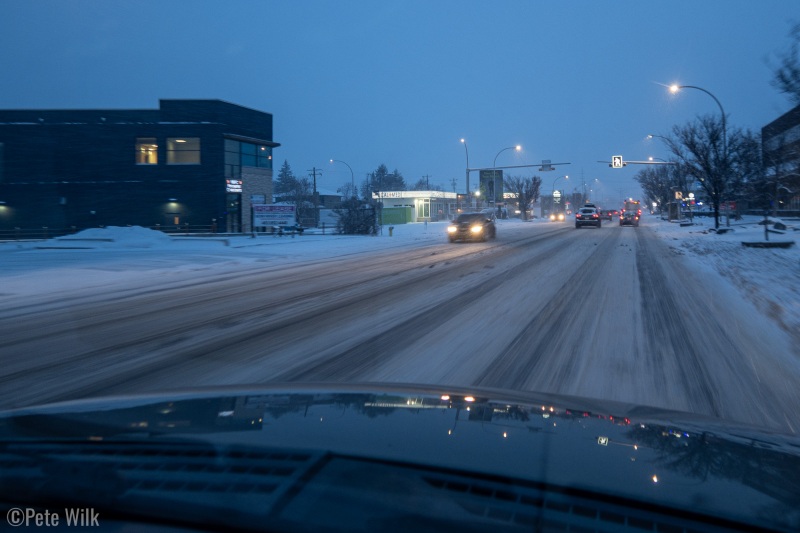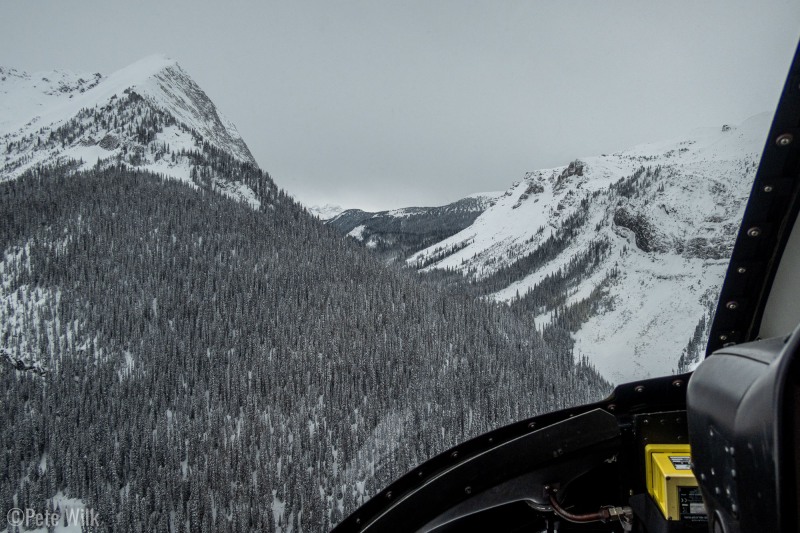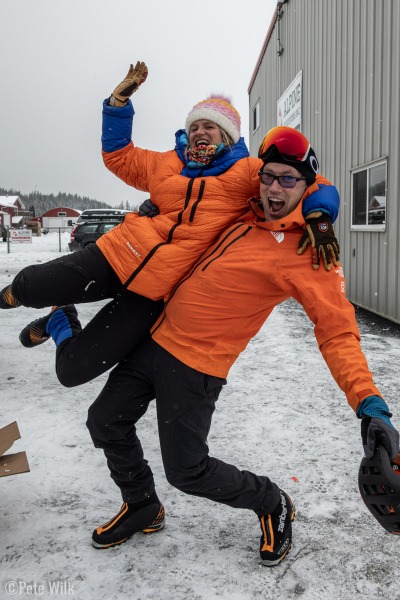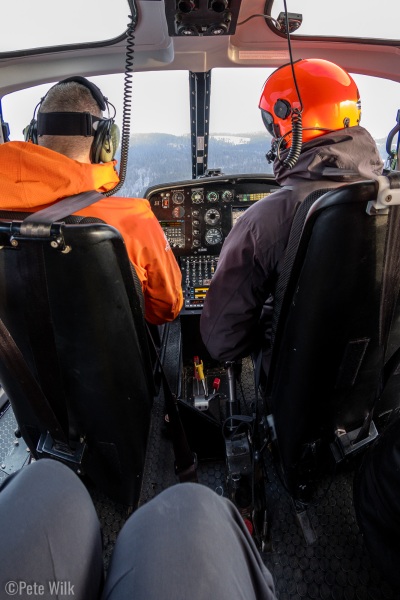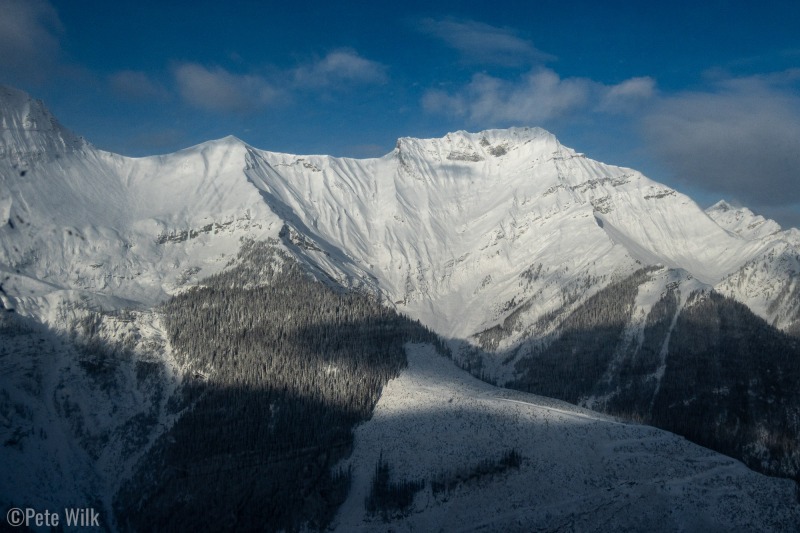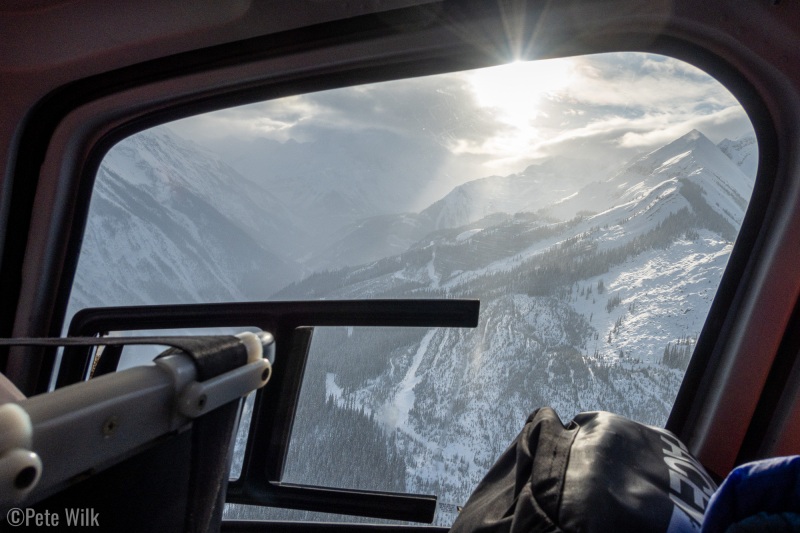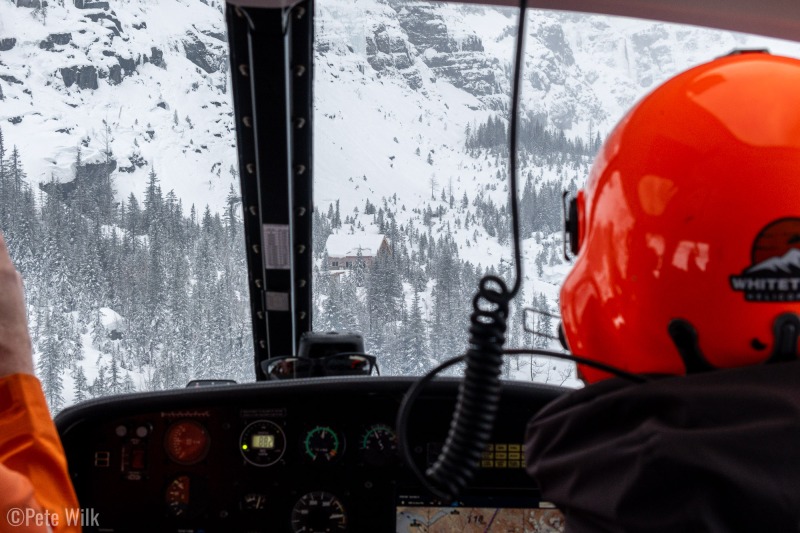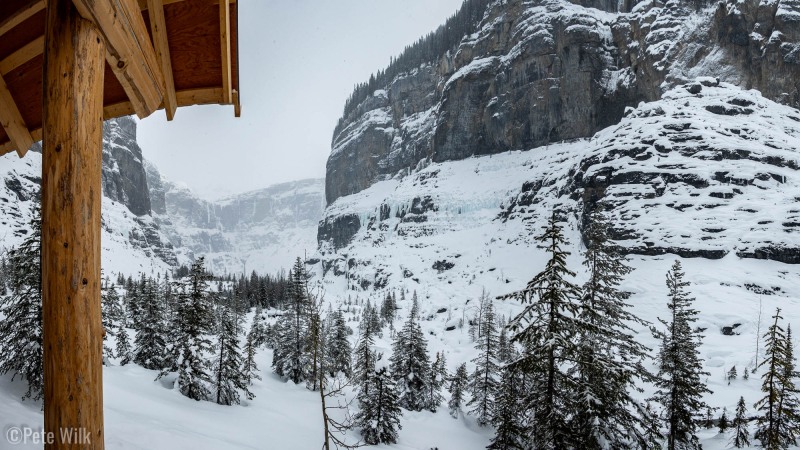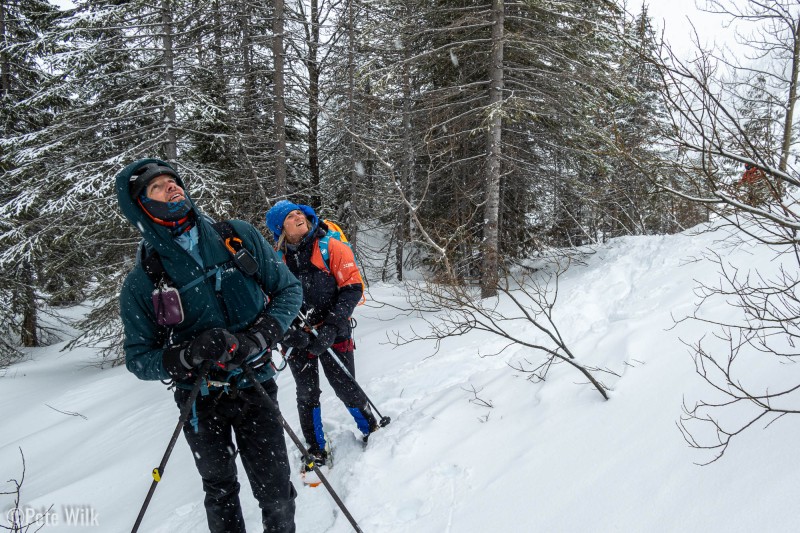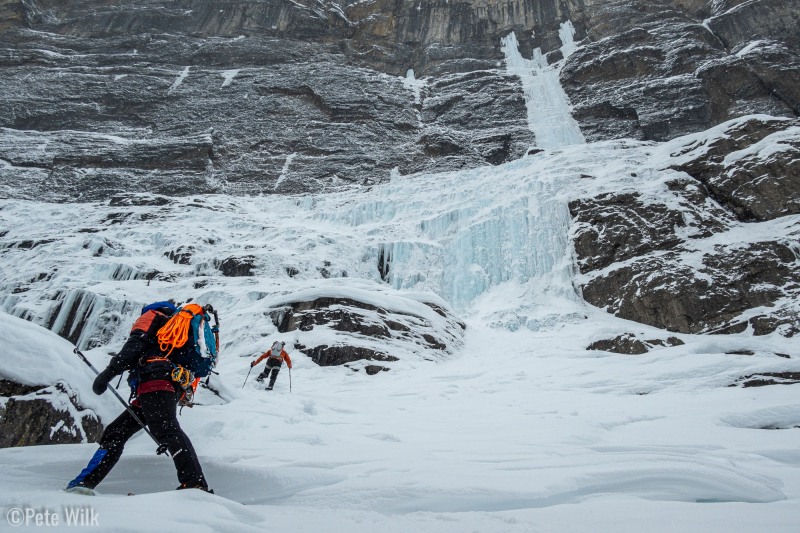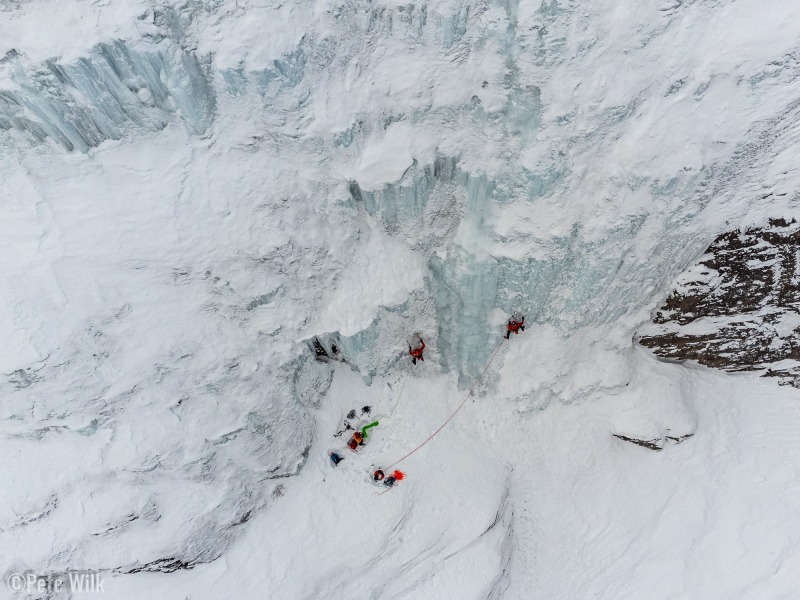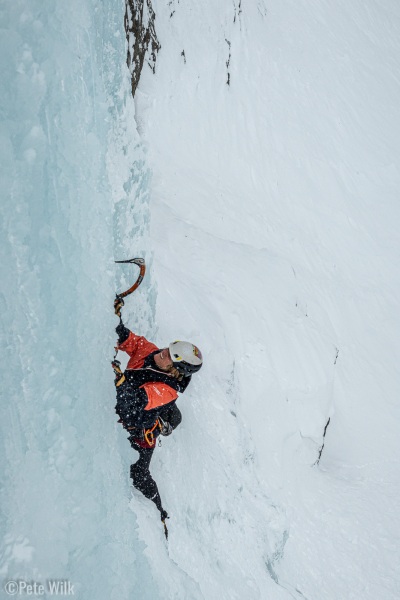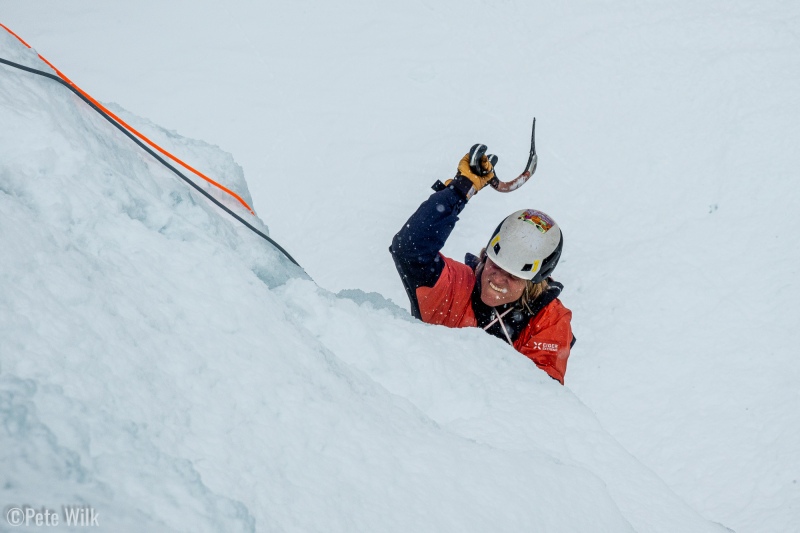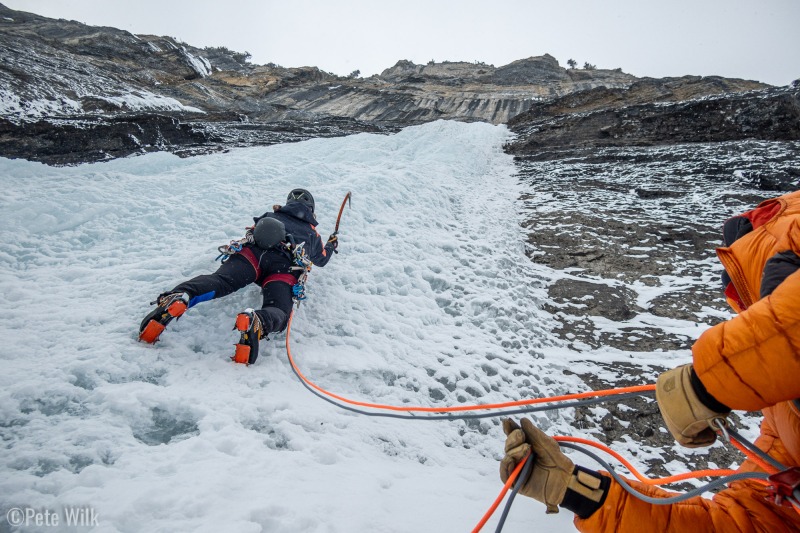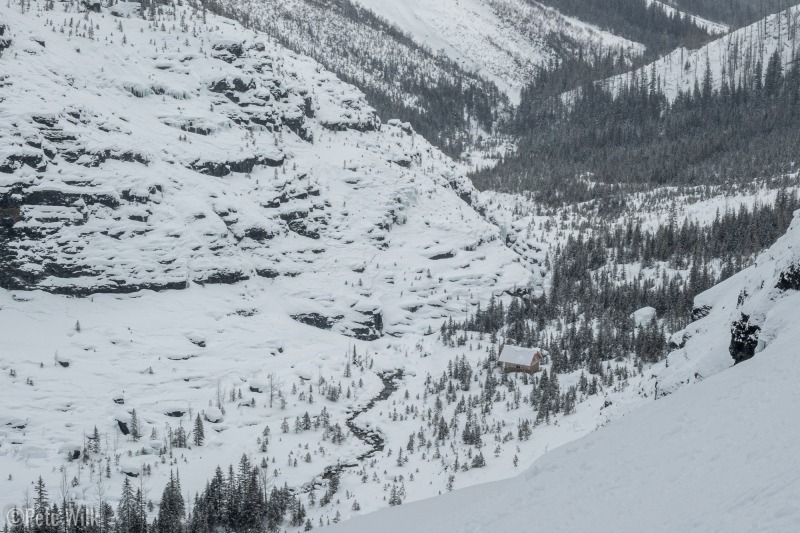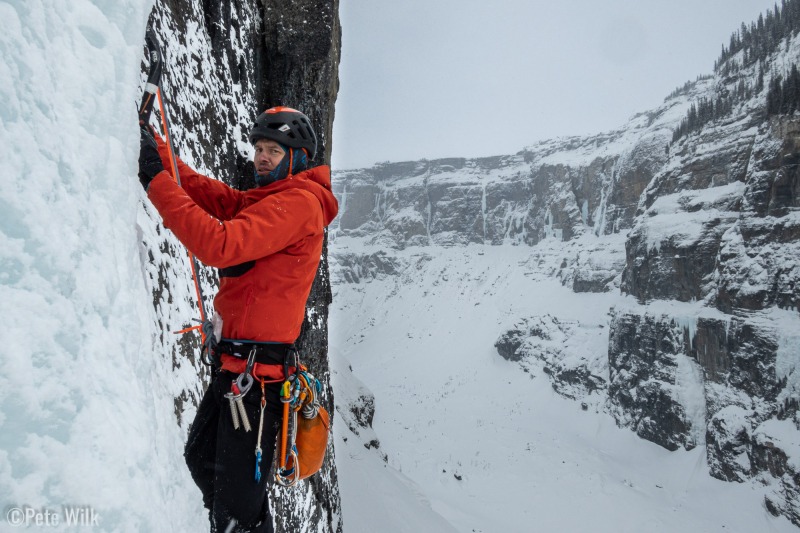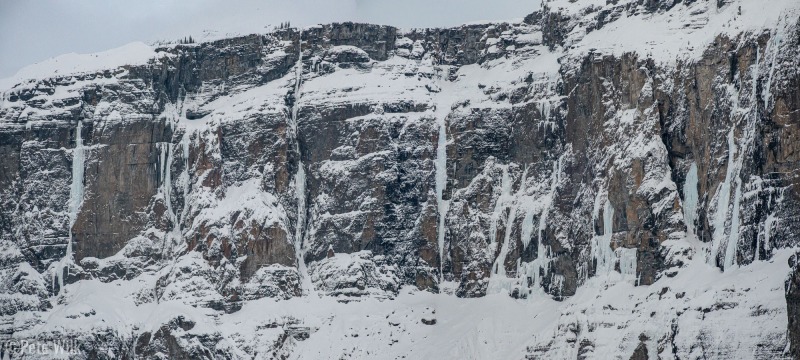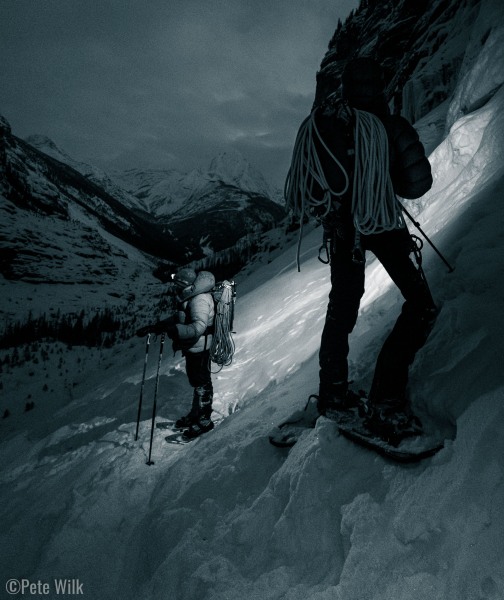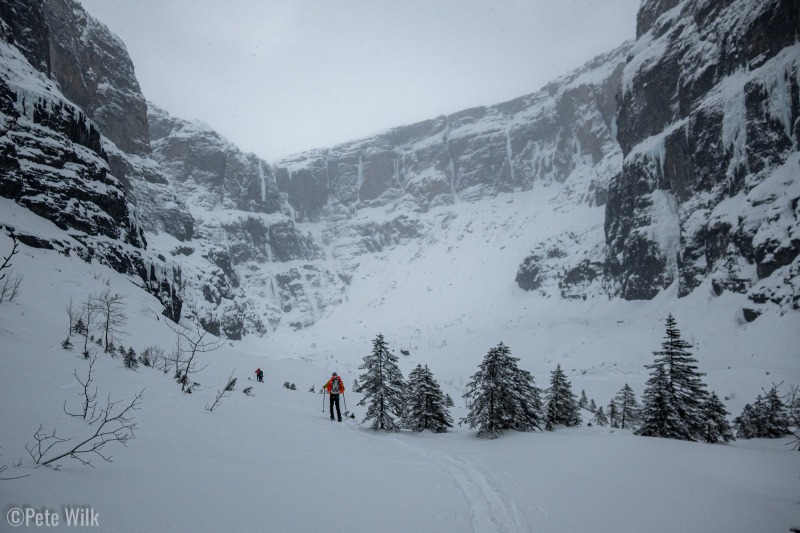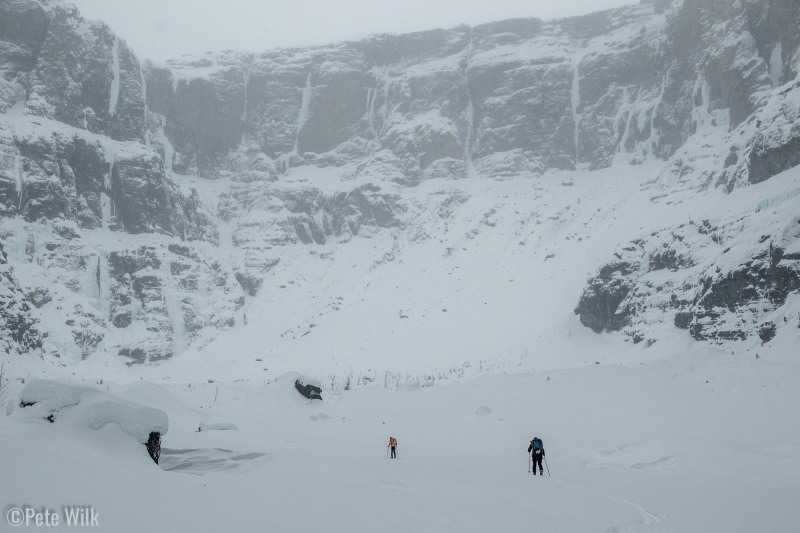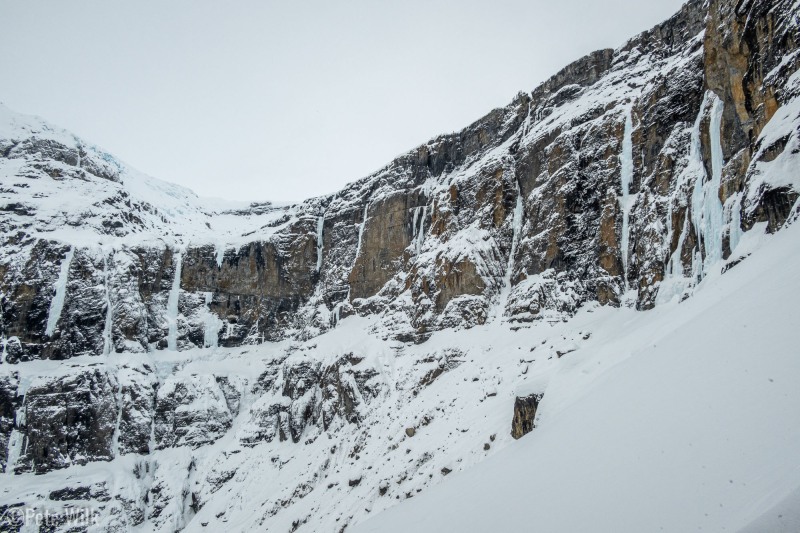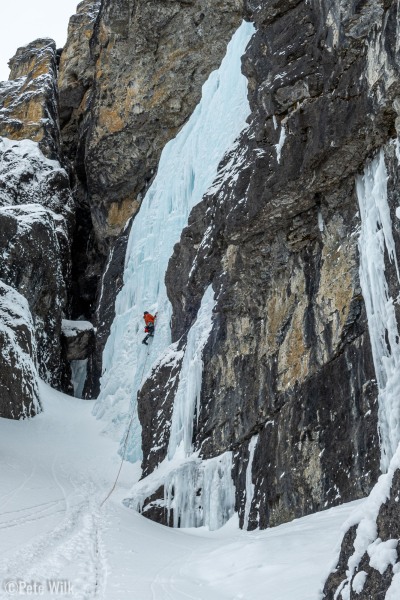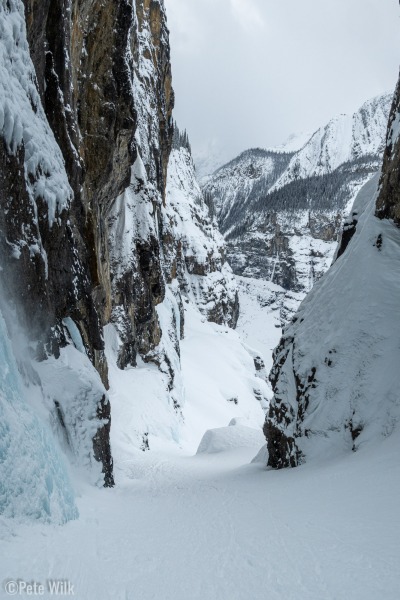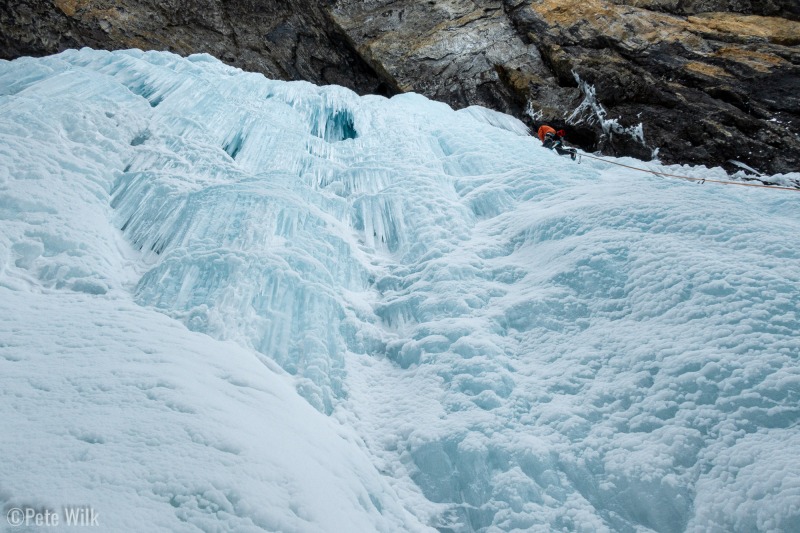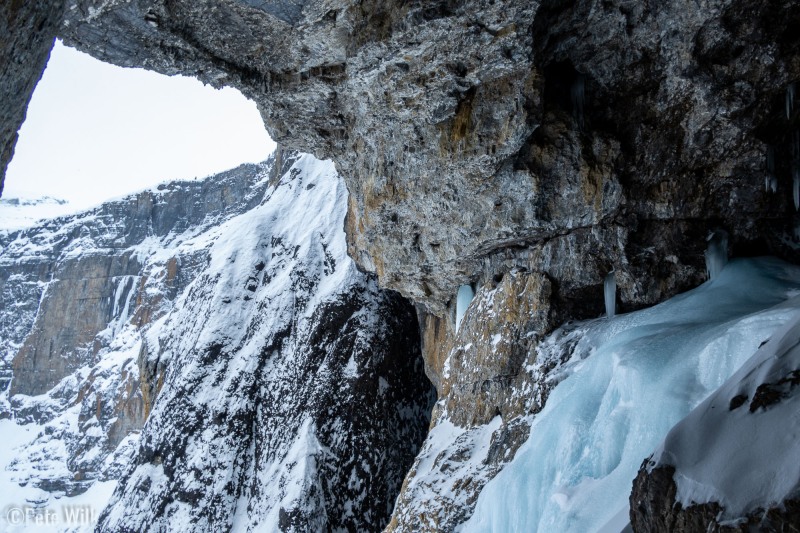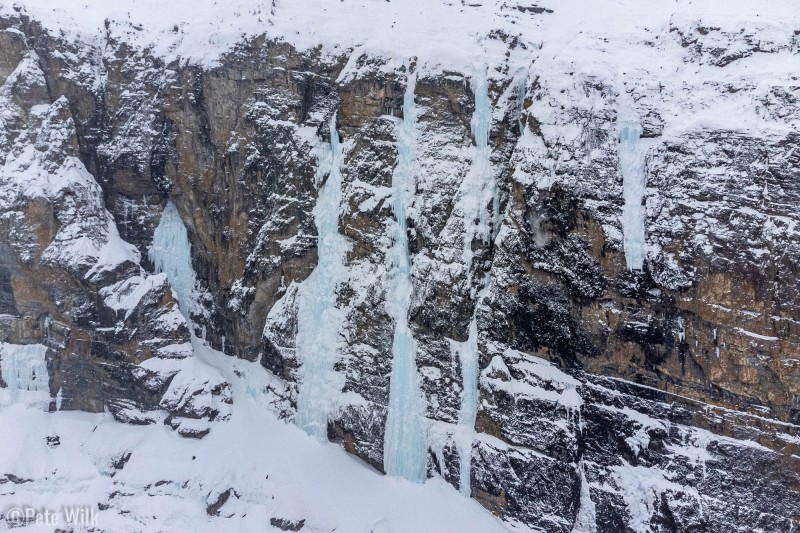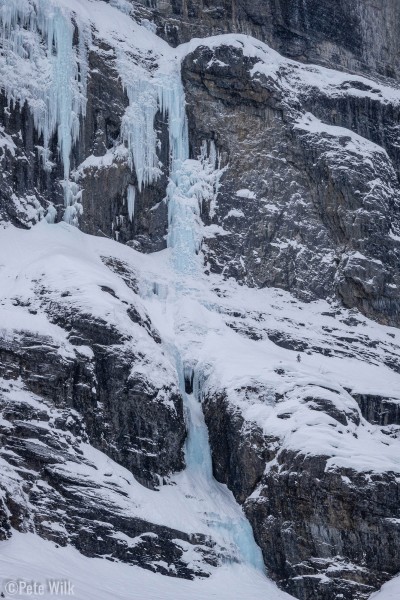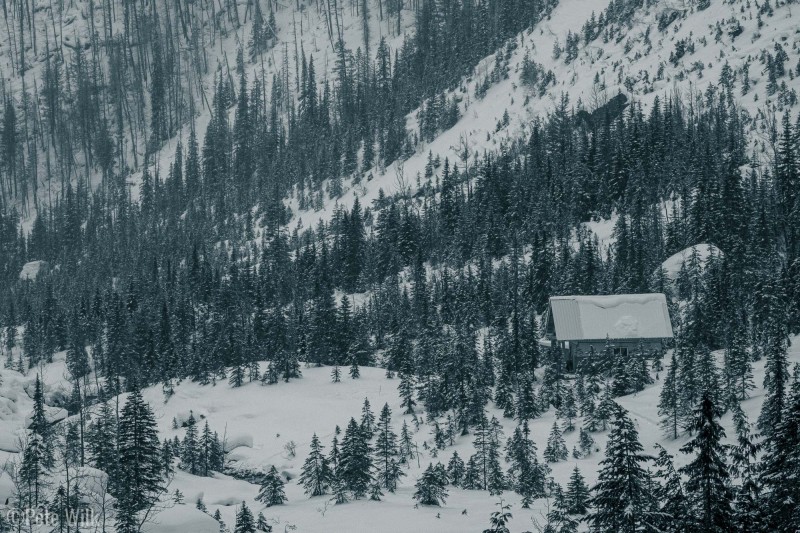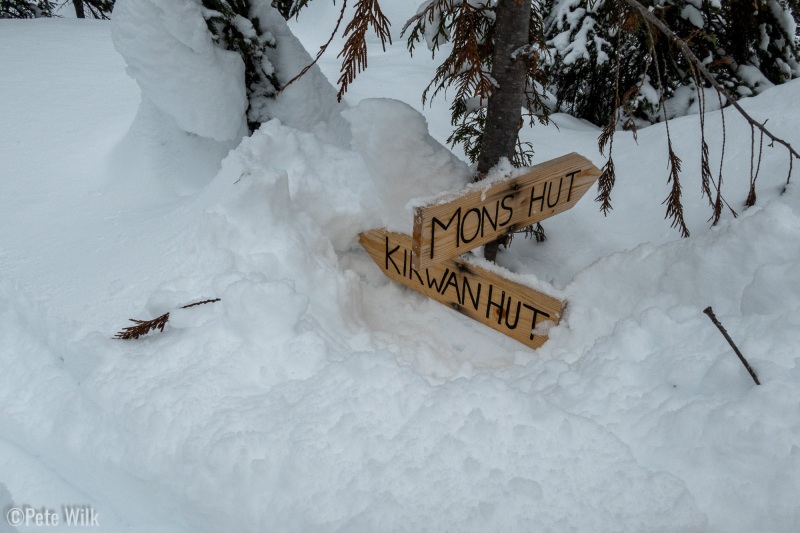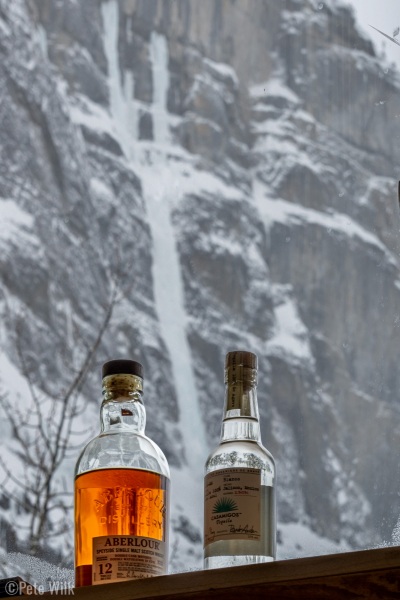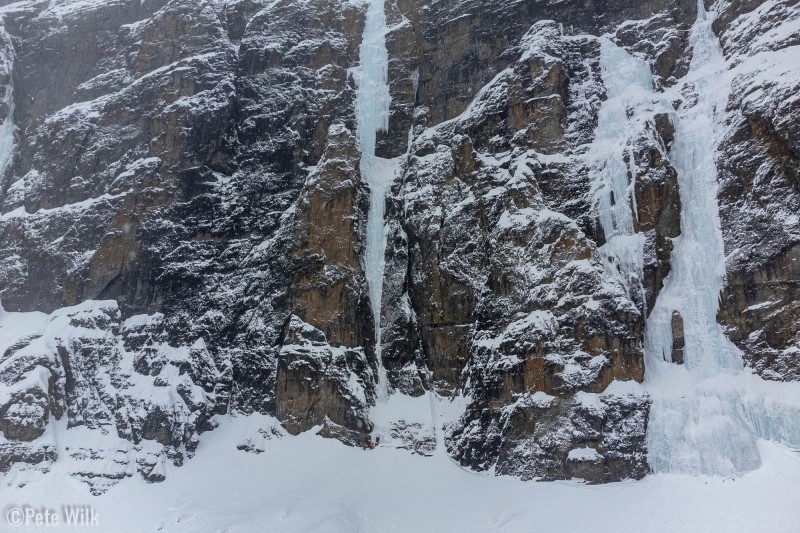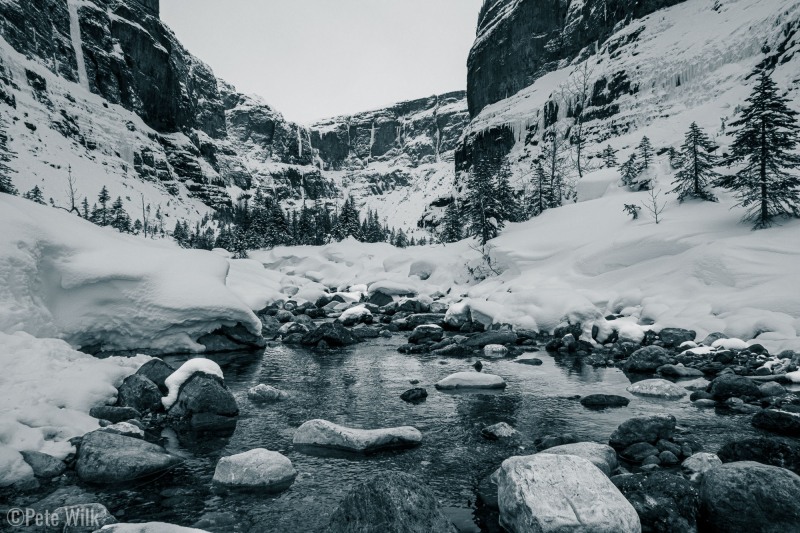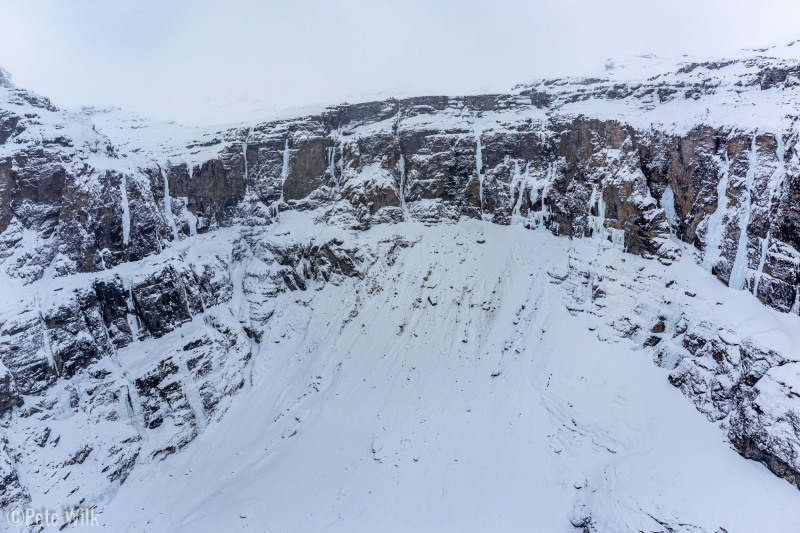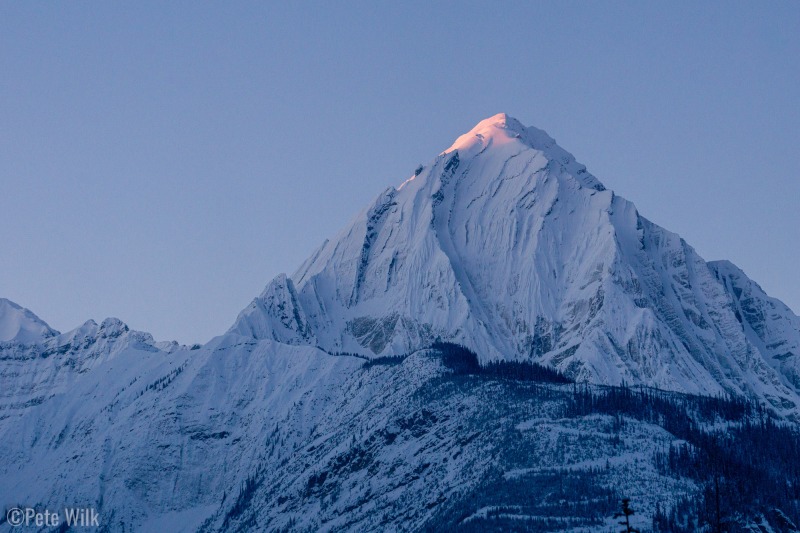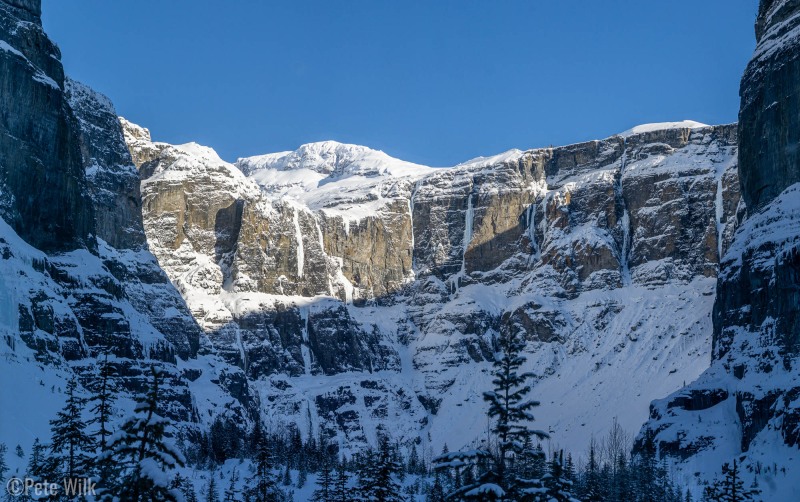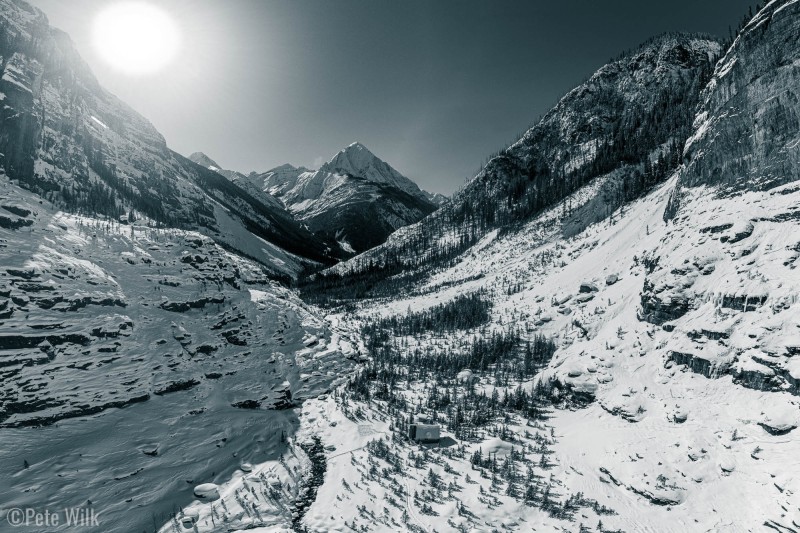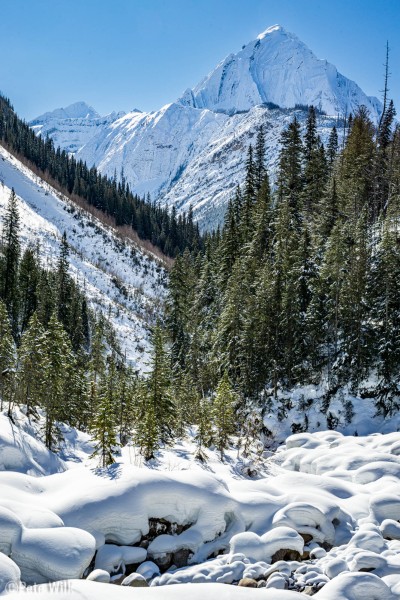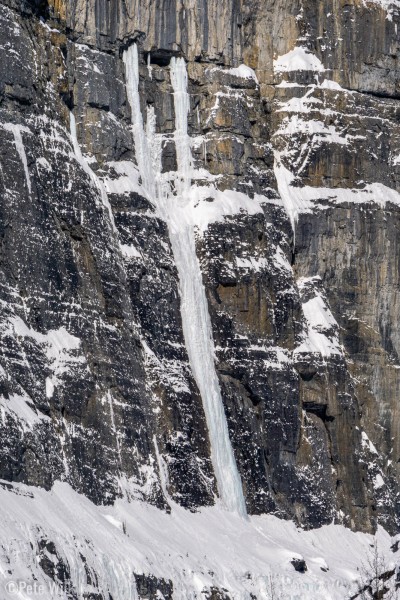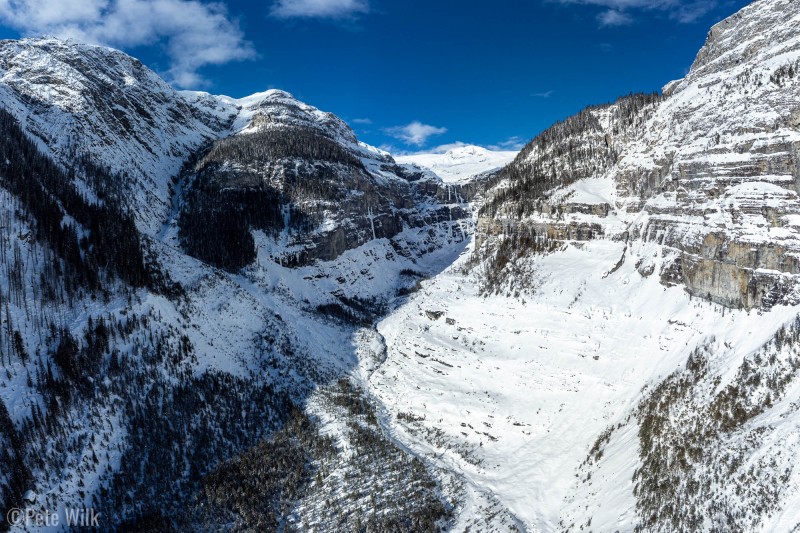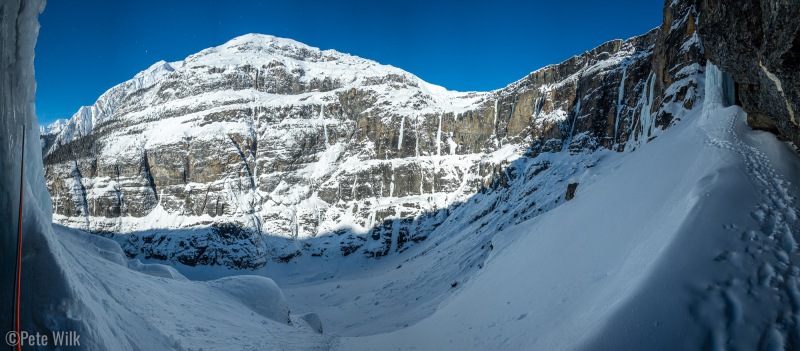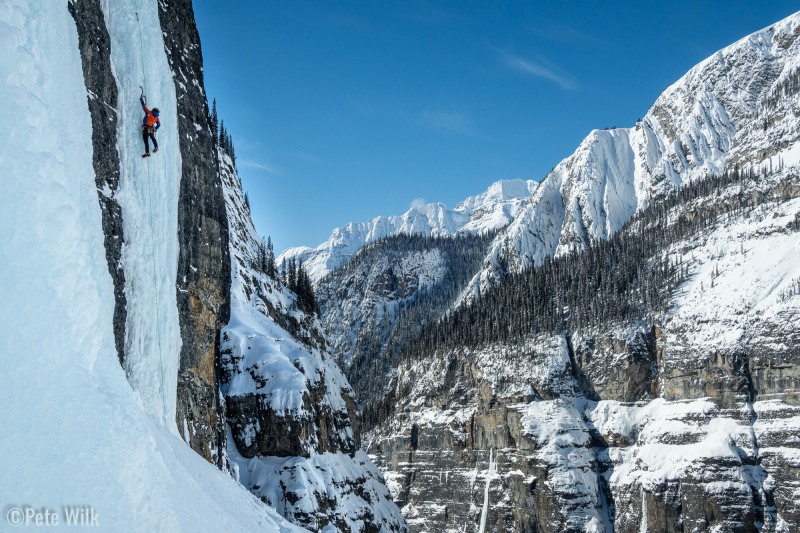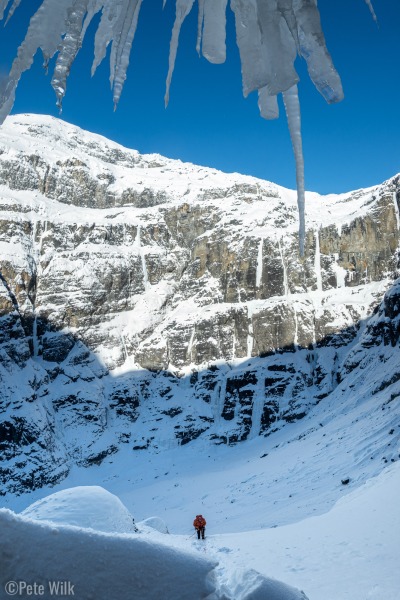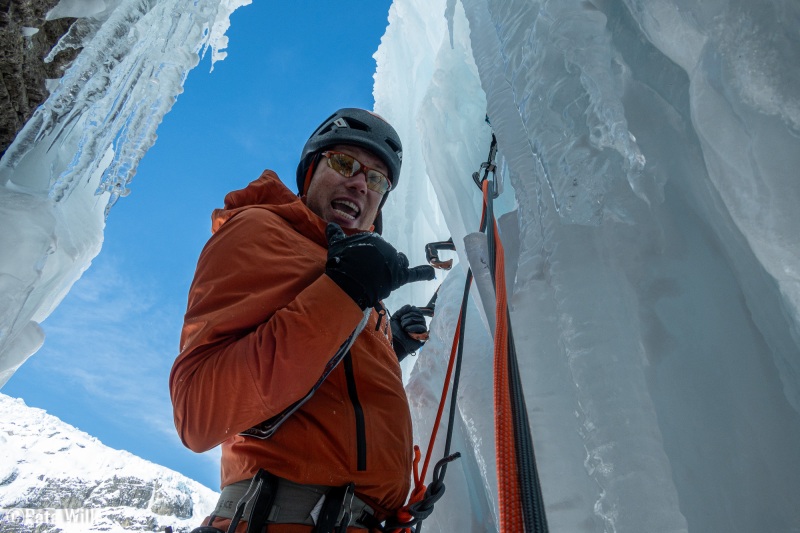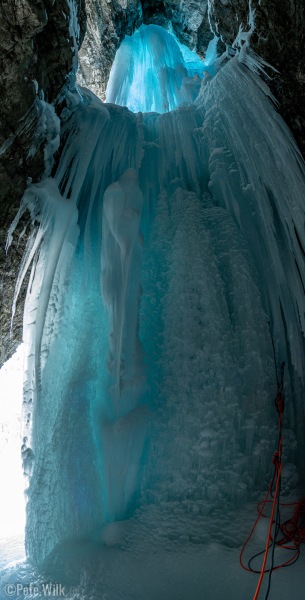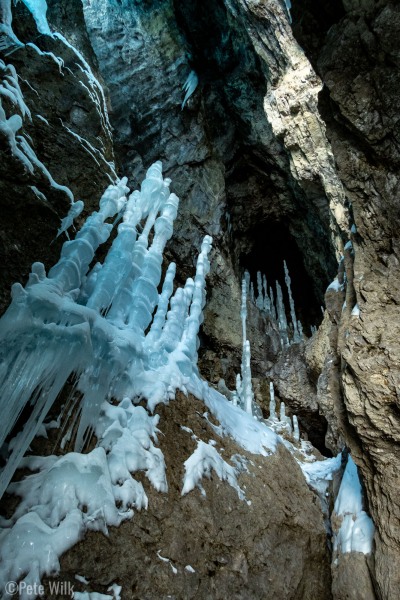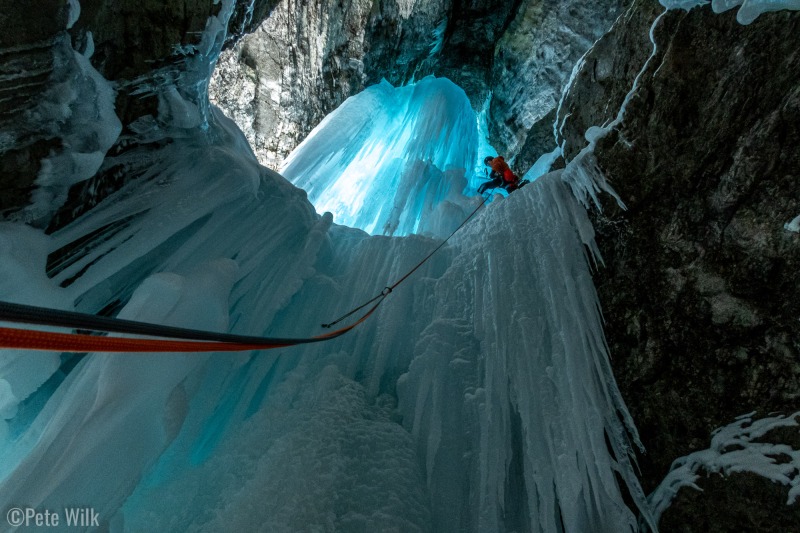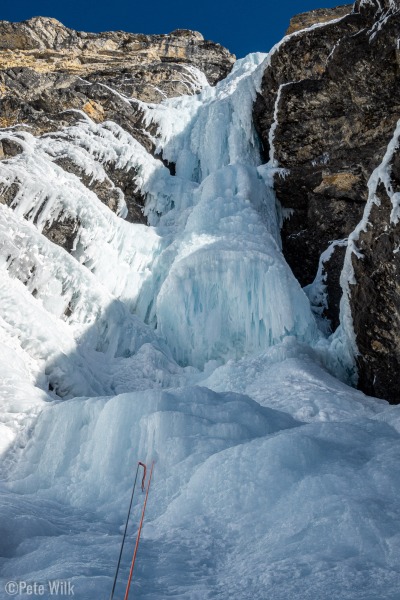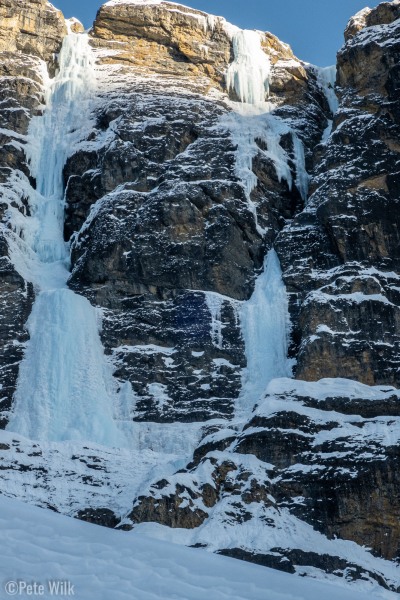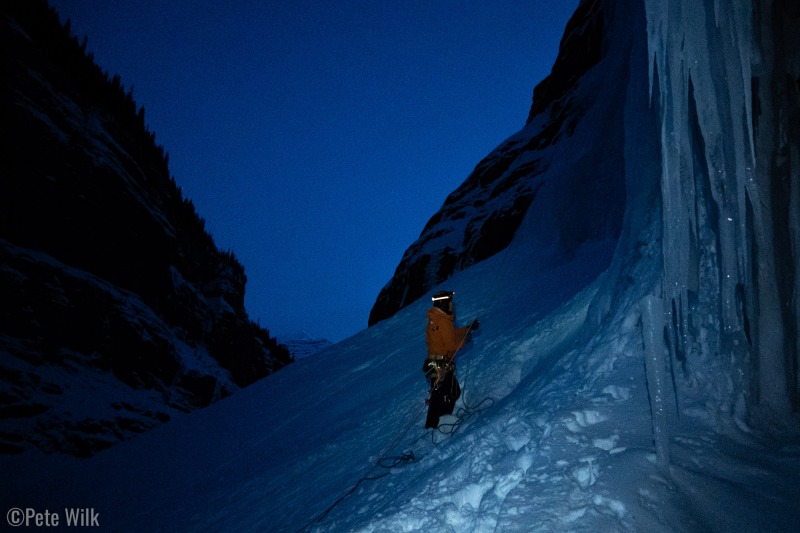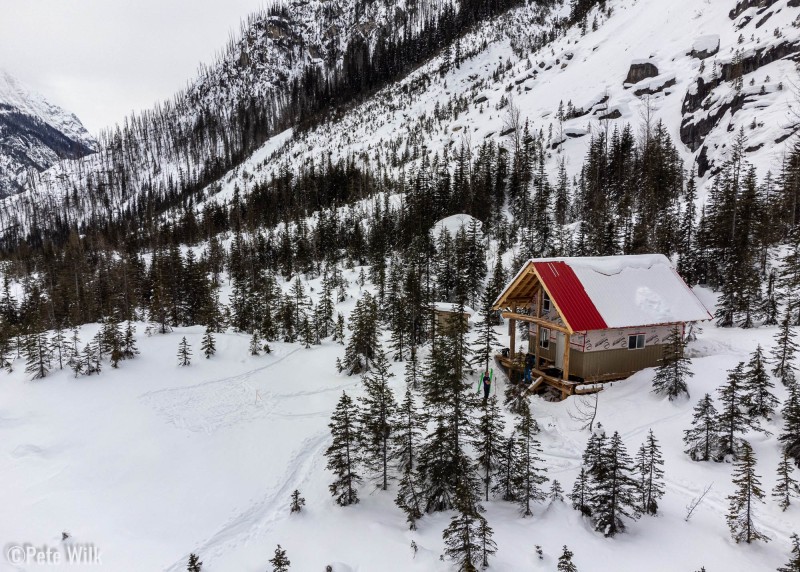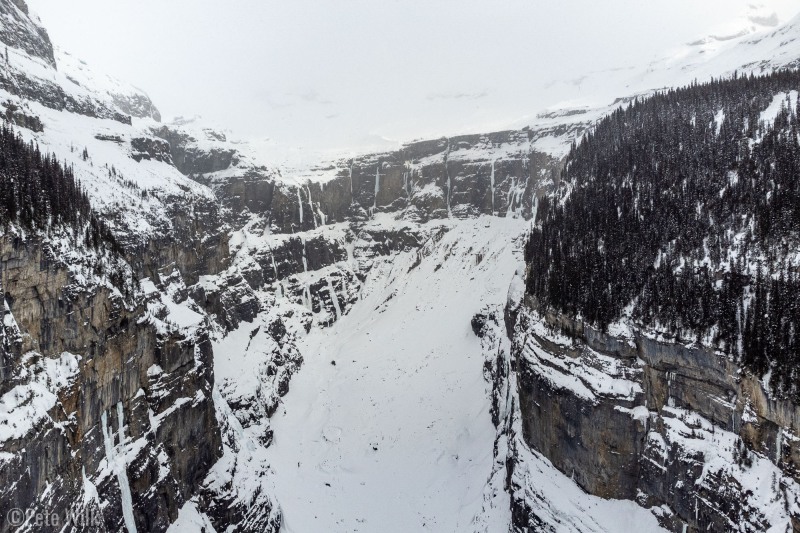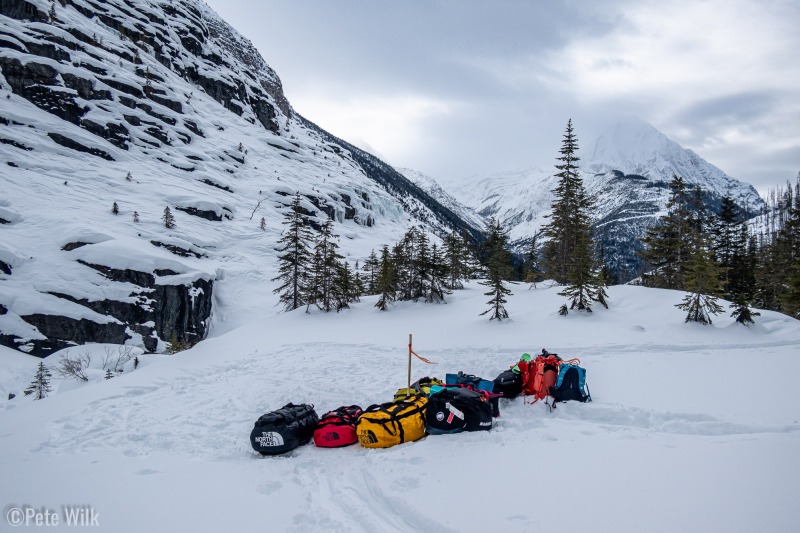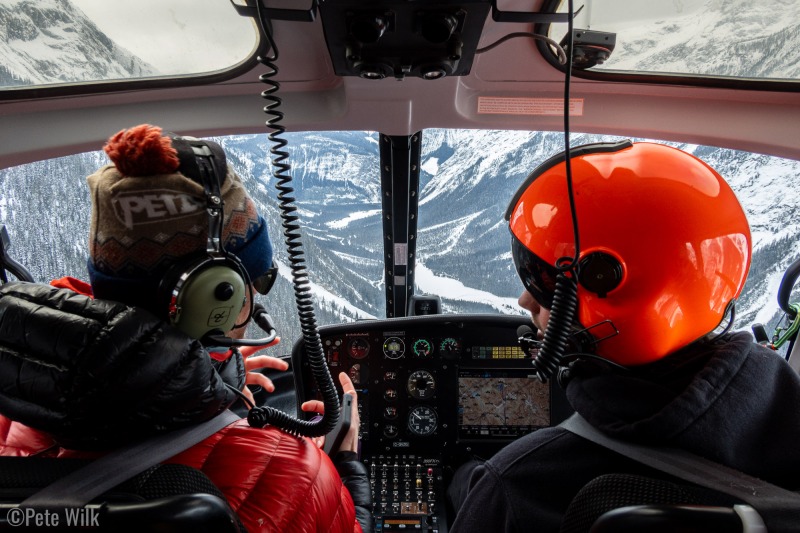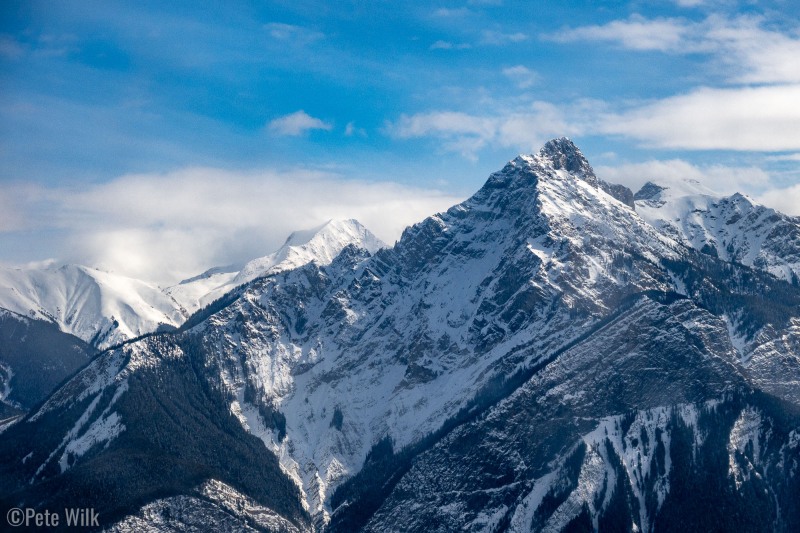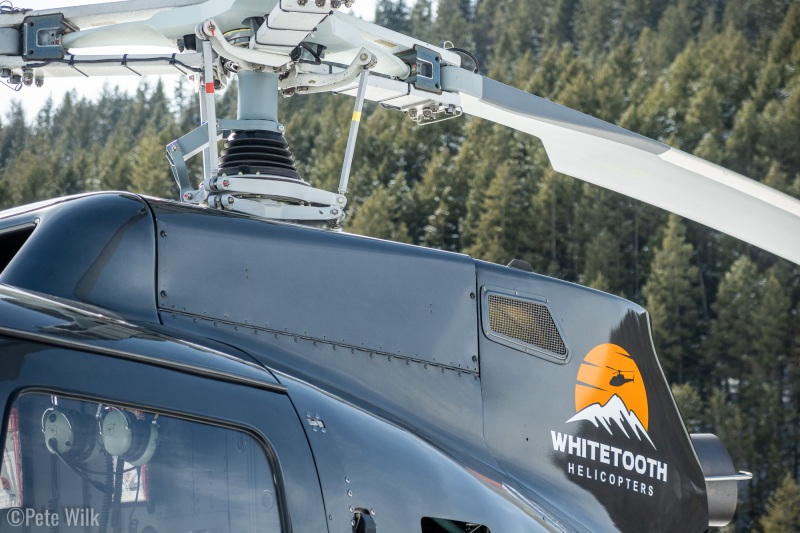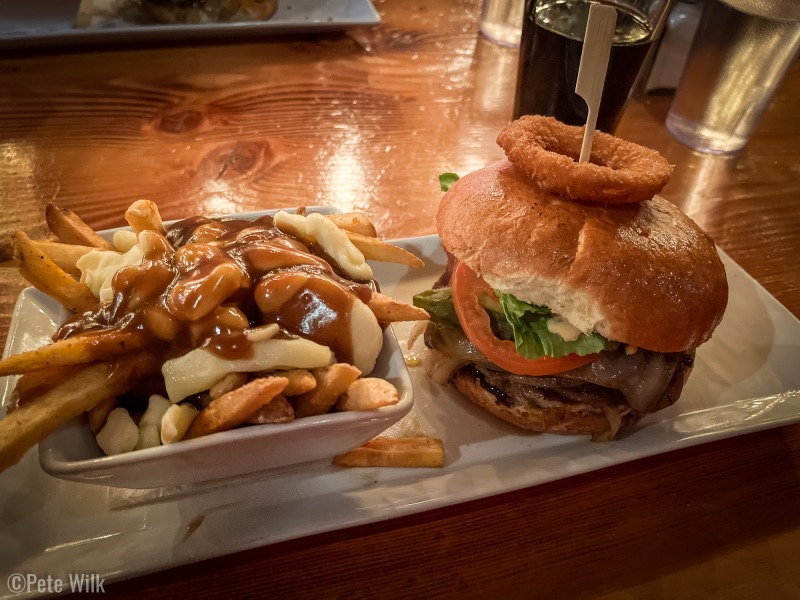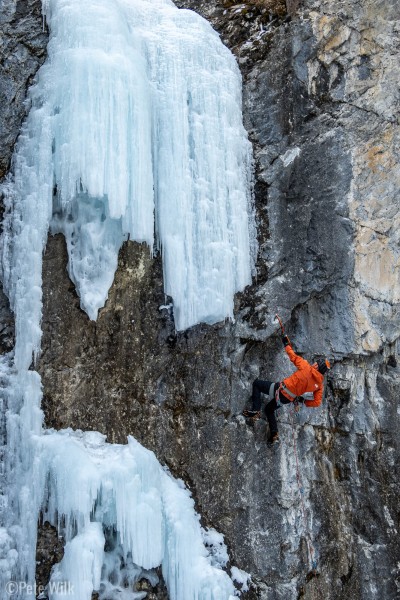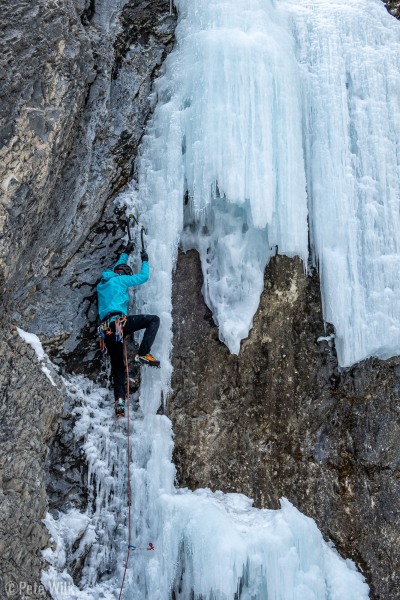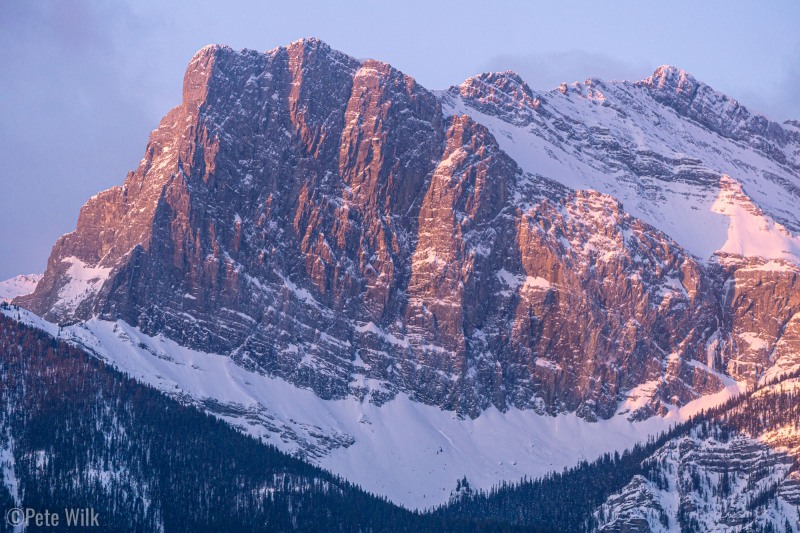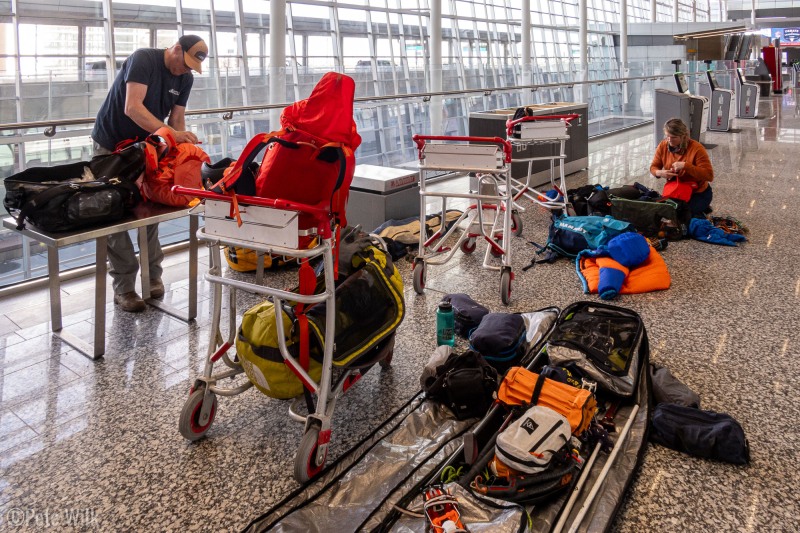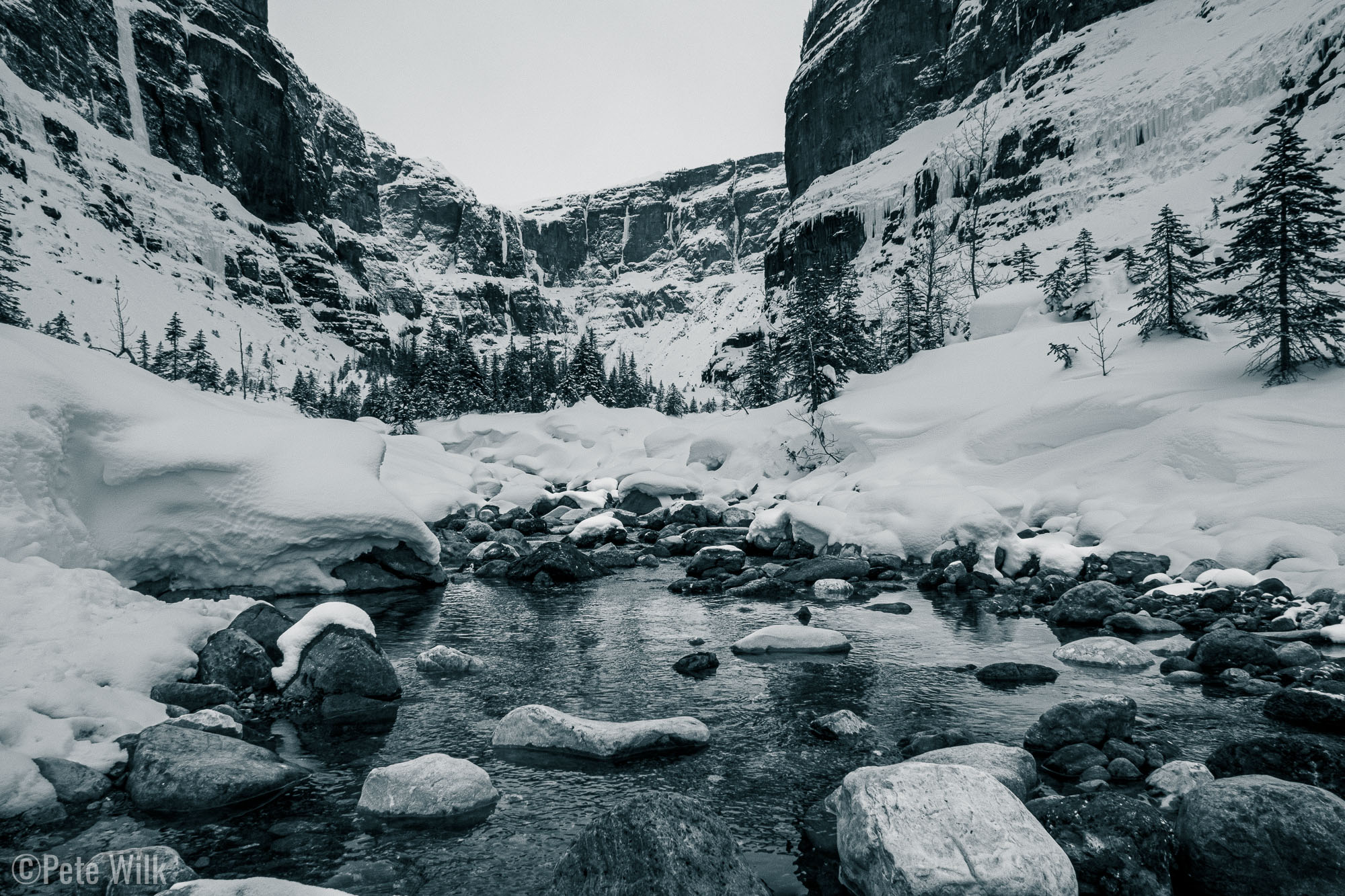
The ’23–’24 ice season has been a strange one. I got started in Bozeman the week of the ice fest. I stayed at Case’s place and we got some good days in, but the week was all over the place with temperatures—normal to unseasonably warm, to cold. After returning to Utah I assumed more days were ahead since the winter was just starting in Utah. As it turned out I only got two pitches of ice in Utah after that, in Joe’s Valley, and fairly unremarkable at that. Over President’s Day Carly and I climbed in Ouray, but the climbing we did was mostly in the park and not leading. Quite a sporadic ice season to say the least.
The big trip of the year was seeded when Case, on his summer in Golden, British Columbia did a mission near the Mons Hut. Making his way up the Icefall Brook drainage he spied an amazing horseshoe canyon with massive waterfalls spilling from the top and directly out of the 1,500′ cliffs below the Lyle and Mons Glaciers. The canyon is home to Cerberus Falls, one of the highest in Canada. While dreaming of the ice climbing potential of this geologic masterpiece he saw a small red roof tucked into the trees at the mouth of the canyon. It was Kirwan Cabin.
The cabin built, in 2023, is named after Troy Kirwan who passed away recently of ALS. While the canyon has seen climbing for decades the addition of this hut considerably improves the comfort for teams wishing to enjoy this wonderful place. The cabin is also open in the summer for enjoying the waterfalls in their dynamic state.
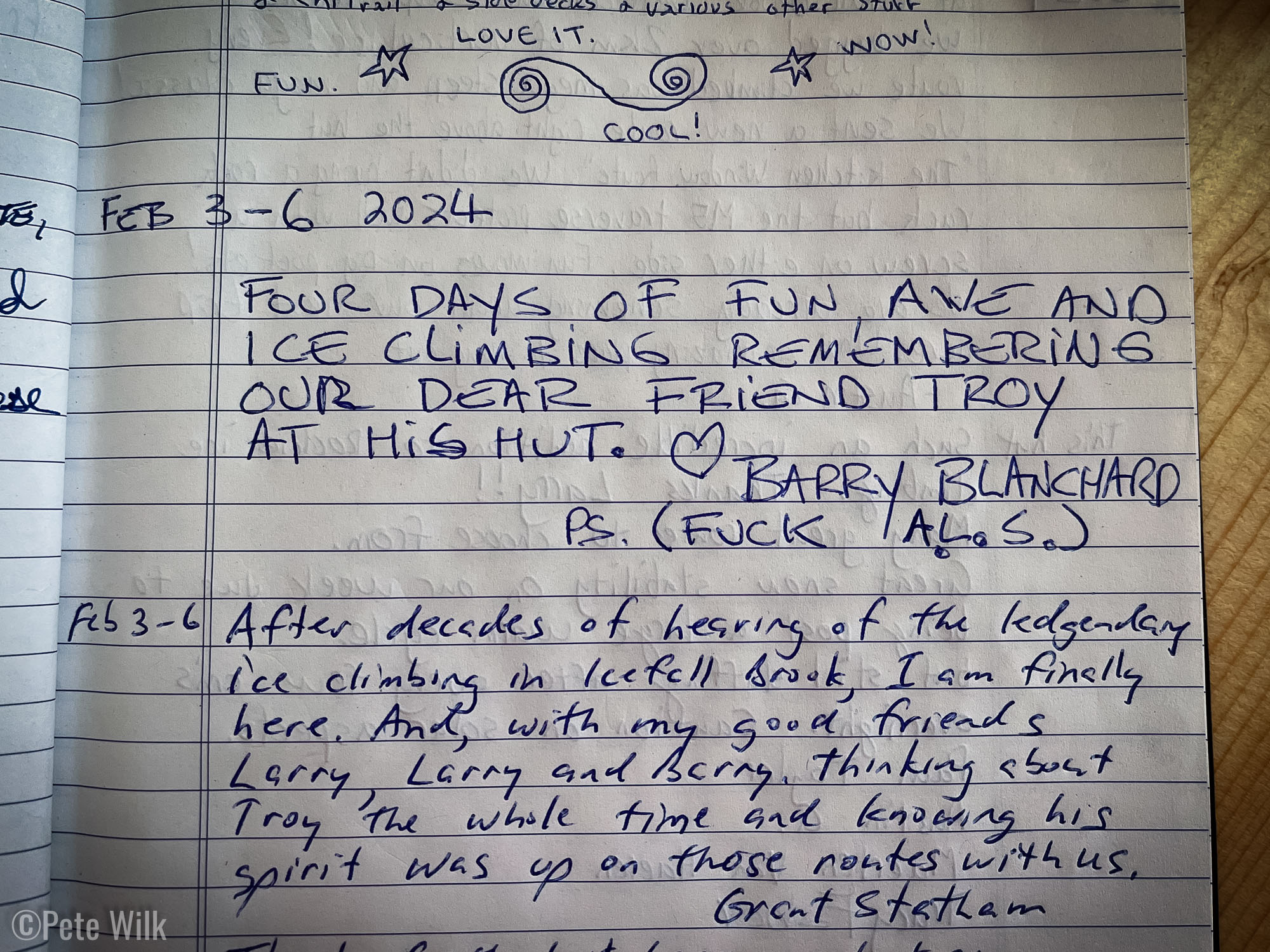
Nate, Lindsey, and I all converged on Calgary around Friday, March 1. Case already up in Golden visiting Nicole did the three hour drive out to pick us up. As I left Salt Lake it was around 50 and sunny, landing two hours later I was reminded that winter still had its grip on the Great White North—it was snowing and 15F.
Nate, Case, and I made our way around Calgary getting groceries and supplies for the upcoming week. Lindsey’s air travel got snafu’ed and she didn’t arrive until late in the evening so we stayed in Calgary for the night.
The hut is only accessible in the winter via helicopter, or possibly a hellish snowmobile and ski death march through dense forest deadfall and rocky gorges. Our flight in was scheduled for noon Saturday so we departed Calgary early so we could negotiate the snowy Hwy 1. Thankfully we made it to Golden with time to repack food and gear. We loaded up Alpine Helicopter’s Bell 207 and headed out under clouds and snow flurries. From the front seat I had an awesome view of the rugged terrain of British Columbia’s Rocky Mountains. However, the visibility kept us pretty low in the valleys for our 30 mile flight in (we actually left from Donald to shorten the distance). Despite this it was an awesome flight. Having worked in the helicopter/eVTOL world off and on for many years it is fantastic to ride in one of these amazing vehicles. It still feels like magic how a helicopter can move in any direction. Quite unlike anything you experience in fixed wing aircraft and automobiles that must be moving forward in order to change direction.
As we approached Kirwan Cabin we could see snow whirling around near the ridge forming the drainage up to Icefall Lodge. Within 1/4 mile of the cabin we flew into the wind and I could feel the helicopter buffeted and pushed around from the gusts. We pulled up and around for another pass, this time getting not quite as close before having the same thing happen. Despite getting less than a quarter mile from the cabin we had to return to Golden, hoping we could get in the next day.
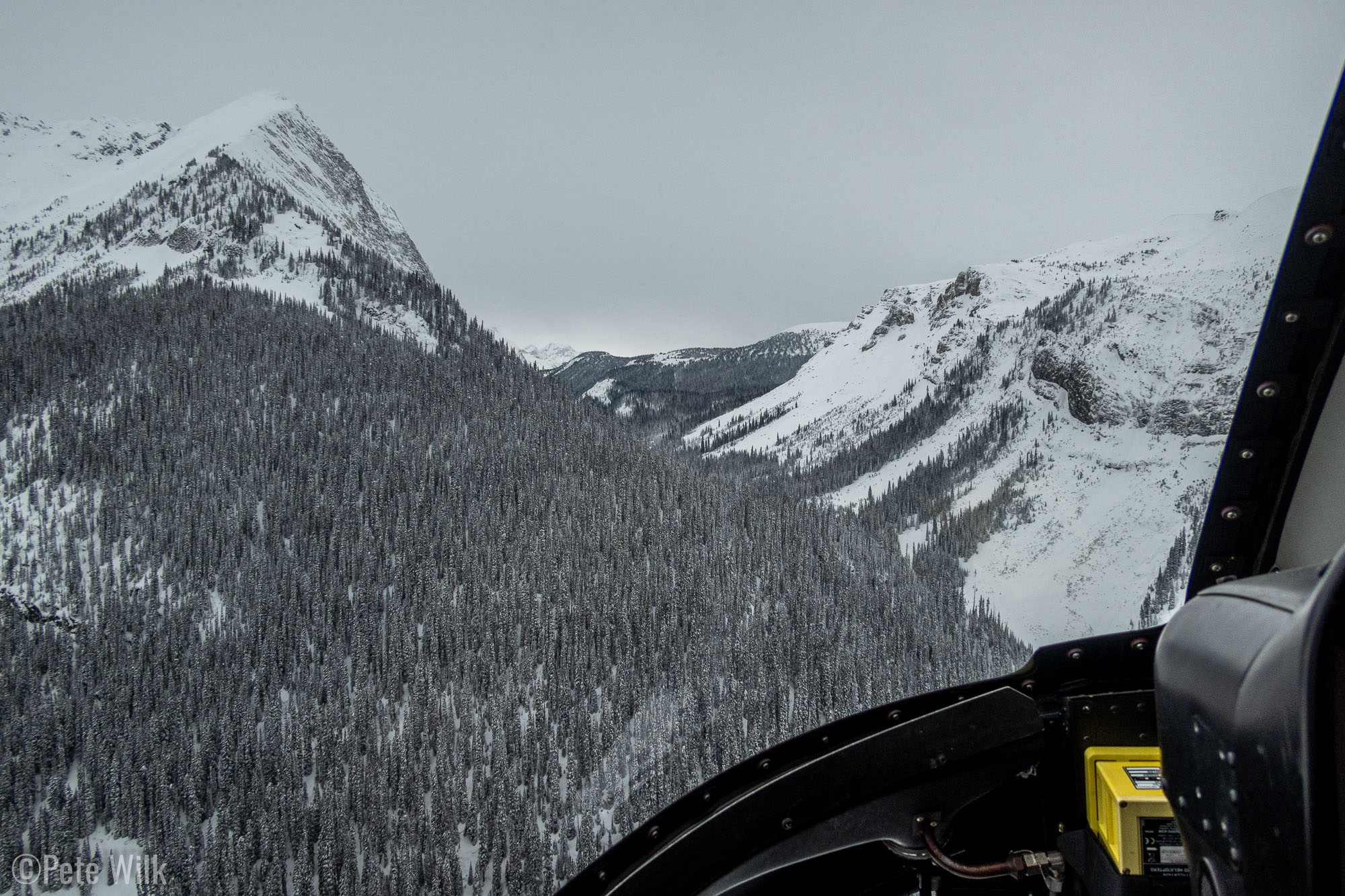
Sunday because of availability we jumped over to Thomas at Whitetooth Helicopters and his Eurocopter AS350. The conditions were slightly improved when we took off, a little better visibility and slightly higher clouds. We took a similar track through some valleys and a few higher ridge lines, views were once again fantastic. This time we didn’t find the wall of wind and Thomas was able to set down the at the landing site, just a few dozen yards from the cabin. The four of us hopped out and unloaded our bags from the tail compartment and the external cages. Thomas kept the blades turning during the unload and from my last experience going to Snowfall Lodge I remembered to wear ear plugs and ski googles to make the job more comfortable. We made quick work unloading and after thumbs up on all side Thomas took off leaving us to marvel at the sheer canyon walls and monster ice lines just minutes from the cabin.
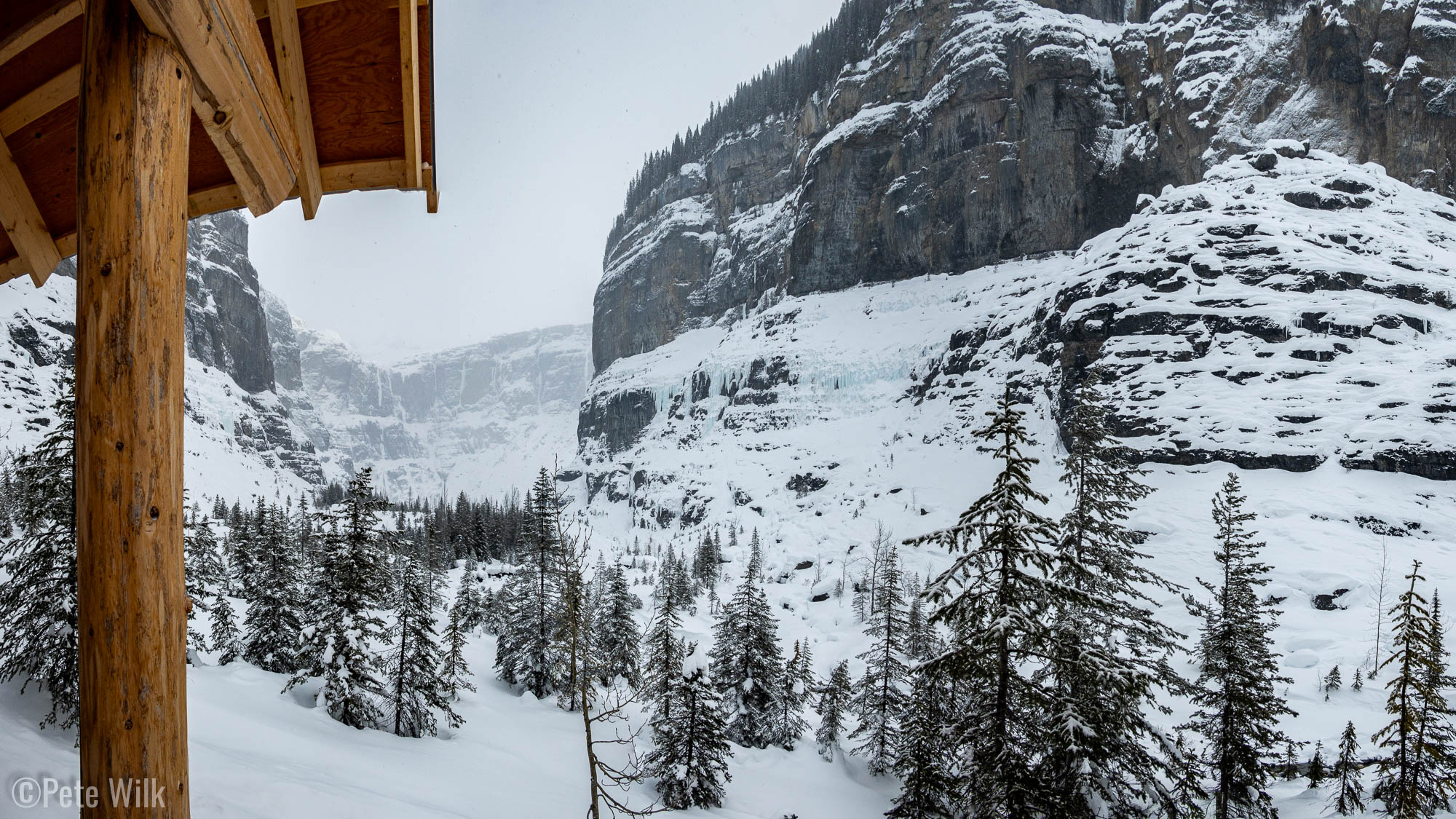
Kirwan Cabin is sits close to Icefall Brook where we got our water. The cabin itself is two levels, kitchen and living area on the main and sleeping on the second level. Luckily even though the cabin isn’t finished completely most of the inside is, including sleeping pads and blankets. Kitchen is fully kitted with plates, bowls, utensils and cookware. Propane supplies fuel for the stove and furnace. No sauna at the moment, future addition maybe? No electricity for guest use other than lights inside. We brought a bunch of power banks.
After getting our stuff moved inside and unpacked a bit, the next order of business was to gear up and go over to Popsicle Toes (WI5) just a quarter mile up canyon. This flow is one that springs directly from the cliff rather than spilling over the rim. Icefall Canyon is a very dark and compact limestone. Despite its often unfractured nature the limestone has some weaknesses which allow water to flow from the glacier/icefield at the top of the canyon. Popsicle Toes is formed by one such fracture.
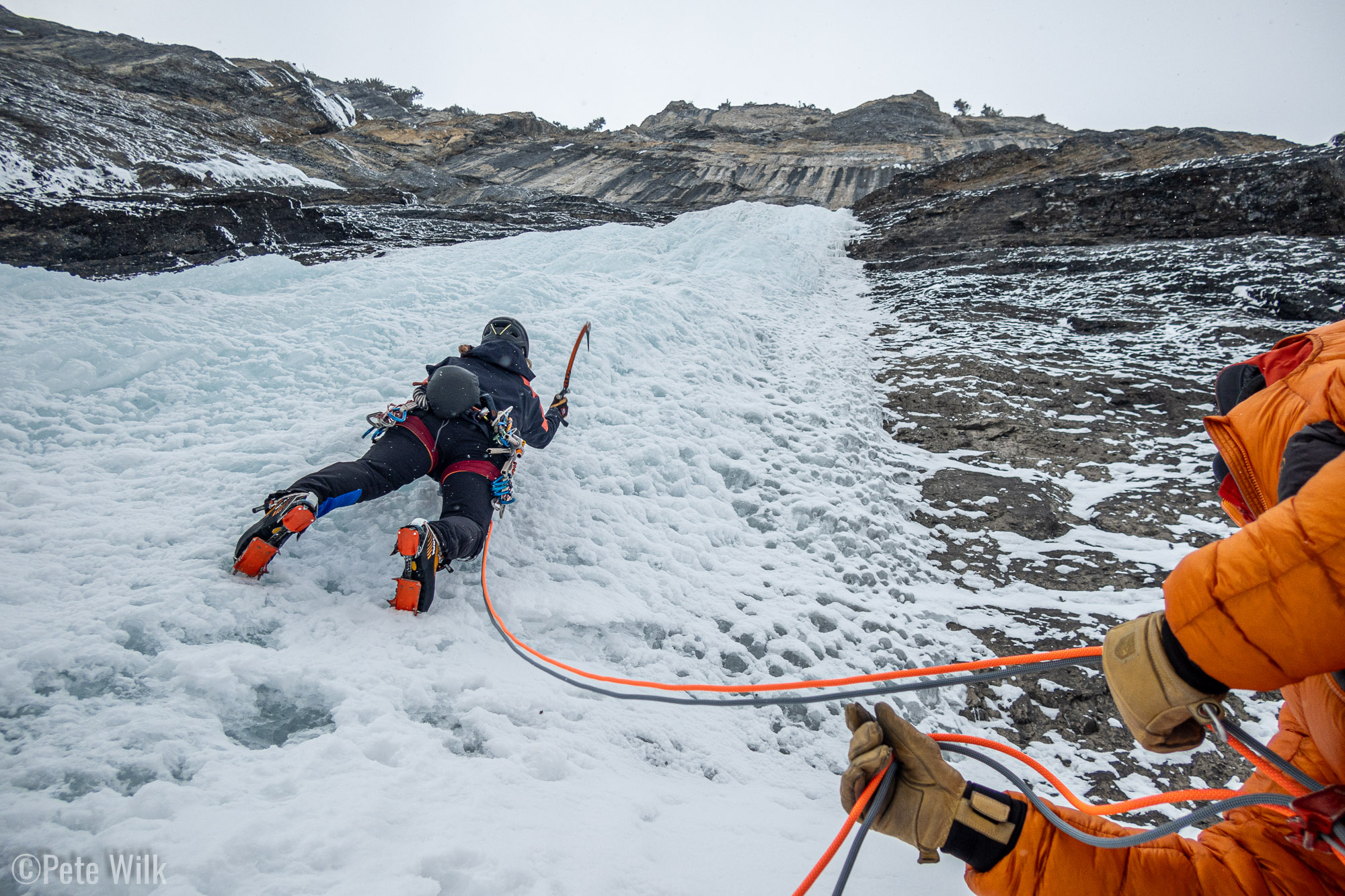
Nate and I teamed up as a party and Lindsey and Case paired off. They both headed up the lower angle approach pitch. After about 60m they both found some ice under a massive boulder to bring Lindsey and I up. After moving the belay Nate and Lindsey went after the awesome middle pitch. It wasn’t particularly steep, perhaps WI4+ at most, but it was work. Junk ice on the outside made the climbing a lot of work—”blue collar climbing” was the theme we’d learn for this area. Not sure how long the middle pitch was Nate and Lindsey set belays about 1/2 way up on a slight snow stance. From here Case and Nate went up, unfortunately raining the garbage surface ice down on Lindsey and I. After getting to the top of this “fork handle” pitch we decided that that both of the “fork tine” pitches were baked and didn’t warrant a closer inspection so we started to rappel.
Monday we all headed up canyon to see how the snow stability was since there were some steep approach slopes to most climbs. We had regular touring skis and found that things were pretty stable, though the snow surface was variable for walking/skiing. Some areas were scoured from wind and a solar crust made for easy walking/skiing. Other areas were softer snow and we post holed once we got out of the skis. In retrospect I think approach skis and Silvretta bindings would have been the better plan. Ski crampons might also have been good. There’s not much in the way of regular skiing to be had.
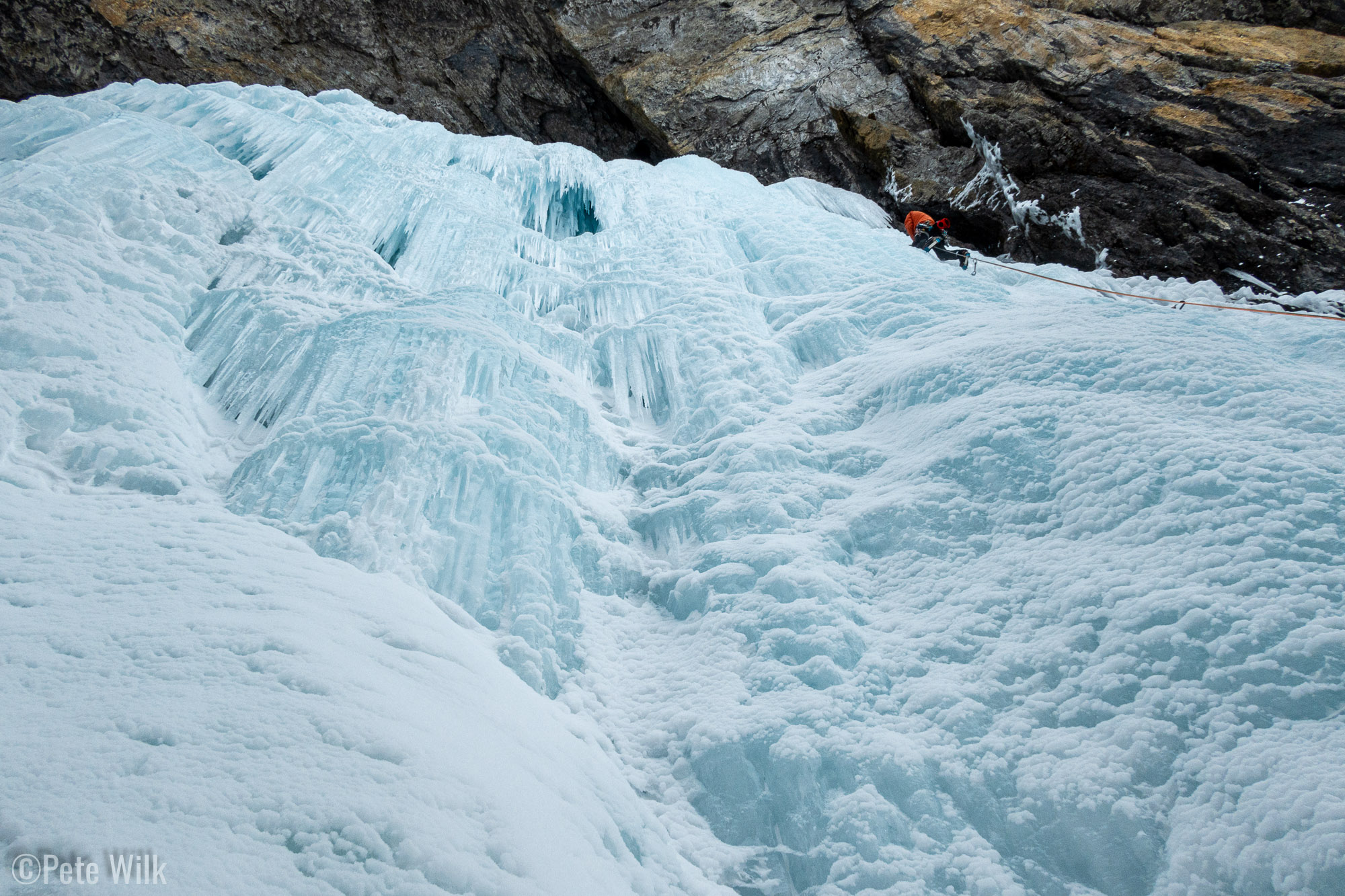
After another shared approach pitch which Lindsey and I lead we slogged up some snow to the base of Blue Lagoon (WI5). Case and Lindsey headed up this and Nate and I traversed over left to Ice Palace (WI4). After another snow slog Nate was able to get on the ice and again we found moderate angle, but time consuming ice to climb. Ice palace sprouts from a cavern mid way up the cliff. After a surprisingly long pitch of 60m we pulled into the cavern which overhung the cliff by 30–40ft. The route’s name fit it well. Between a later start, cautious snow assessment and slogging we only got two pitches in for the day before heading back to the cabin. That evening I even switched my crampons to dual points, which I haven’t done in ages because the ice quality lent itself to more points for purchase.
Tuesday I was kind of worked and decided to take a rest day at the cabin. My back had been tight since we arrived and it was good to take it easy and rest/stretch it out. Rest days are infinitely more comfortable when they’re in a heated cabin with a couch than confined to a sleeping bag and tent. Nate and Case headed out for Fossen Falls (WI6). I followed them out as far as where the approach slopes start to get a little drone footage. The route looked awesome with a narrow start before opening up and going through a large curtain which half had fallen down at some point. Once again because of the snow travel and complexity of the terrain they only got a couple long pitches in before coming back to the cabin.
Wednesday we all took a rest day and enjoyed the blue skies and sun the weather brought. It was the first fully sunny day and it was great to enjoy the scenery without having any objectives to get to. We skied about 0.4 mile downstream of the cabin to check out some of the ice that was up on the eastern wall of the canyon. These climbs looked a little out of condition and not fully formed. The strength of the March sun was apparent in that it was probably in the high teens or low twenties, but felt very comfortable with just a base layer on. We agreed that tackling a full-sun climb probably would be a bad idea.

After some inReach chatting with Whitetooth we decided that we’d get picked up Friday at lunchtime—a day earlier than planned. Weather was forecast to deteriorate Friday afternoon and beyond. Thomas had already told us we’d be the last pick-up on Saturday. There were other larger groups going to/from the skiing lodges which would be ahead of us. Minimal food reserves and flights to catch helped temper our disappointment to having yet one more day trimmed from the itinerary.
Thursday we all went big, but mindful of the sun’s effects on the steep ice. Nate and I headed to Blue Lagoon (WI5), which Case and Lindsey had done the first pitch of a few days prior. They planned for High Five (WI5), the next route to the right going up a narrow cleft.
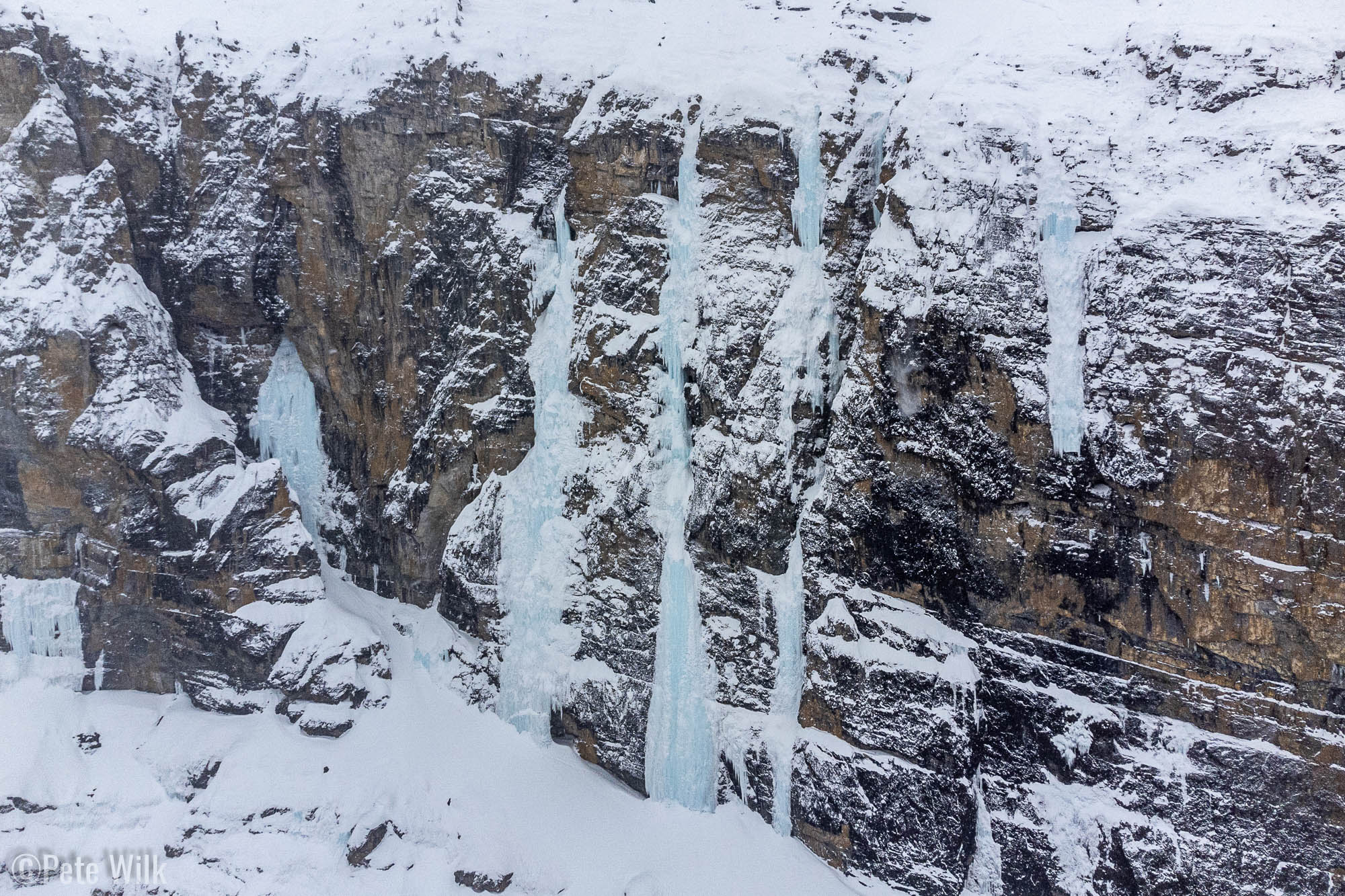
The first pitch of Blue Lagoon is about 65m of WI4 which was quite pleasant, no doubt partially because some of the poorer quality ice had been cleaned off a bit by the time I followed up it. From there I moved the belay another 40ft higher, taking a surprisingly long time given the ease of terrain and distance. A shell of ice over deep snow required patient cleaning in order not to send any large pieces of ice into Nate at the exposed belay.
Nate headed up out of sight for what looked to be a short, but steep pitch. After a shorter than expected distance Nate said on the radio that he was off-belay and was going to bring me up, just because he “had to.” Somewhat perplexed I cleaned the anchor and went up to him. After clearing a short steep section I saw there was a snow ledge that lead back into a cave to the right of the ice flow. Often on ice climbs there are small caves that are formed by a curtain of ice flowing over an overhang in the rock. Normally this wouldn’t be considered a “cave” but for the ice forming the outer wall. Nate however had built the belay inside a proper cave.
Going farther along the snow ledge I entered a cavern in the rock behind the icefall. The cave was perhaps 70ft high and 60ft deep as far as we could see, though some dark areas suggested even farther reaches that the natural light didn’t penetrate. And what a natural light it was too. The light filtering through tens of feet thick ice cast a cool blue hue to the cave. The icefall covering most of the opening of the cave stretched +50ft up in a few tiers. Water seeping from the roof of the cave had formed dozens of ice stalagmites. These formations stretched up from the floor to a dozen feet high in gently waving thicknesses. Without hesitation it is one of the most beautiful and unexpected natural sights I’ve experienced. The route’s moniker was overwhelmingly obvious, but entirely unknown to anyone looking from the outside.
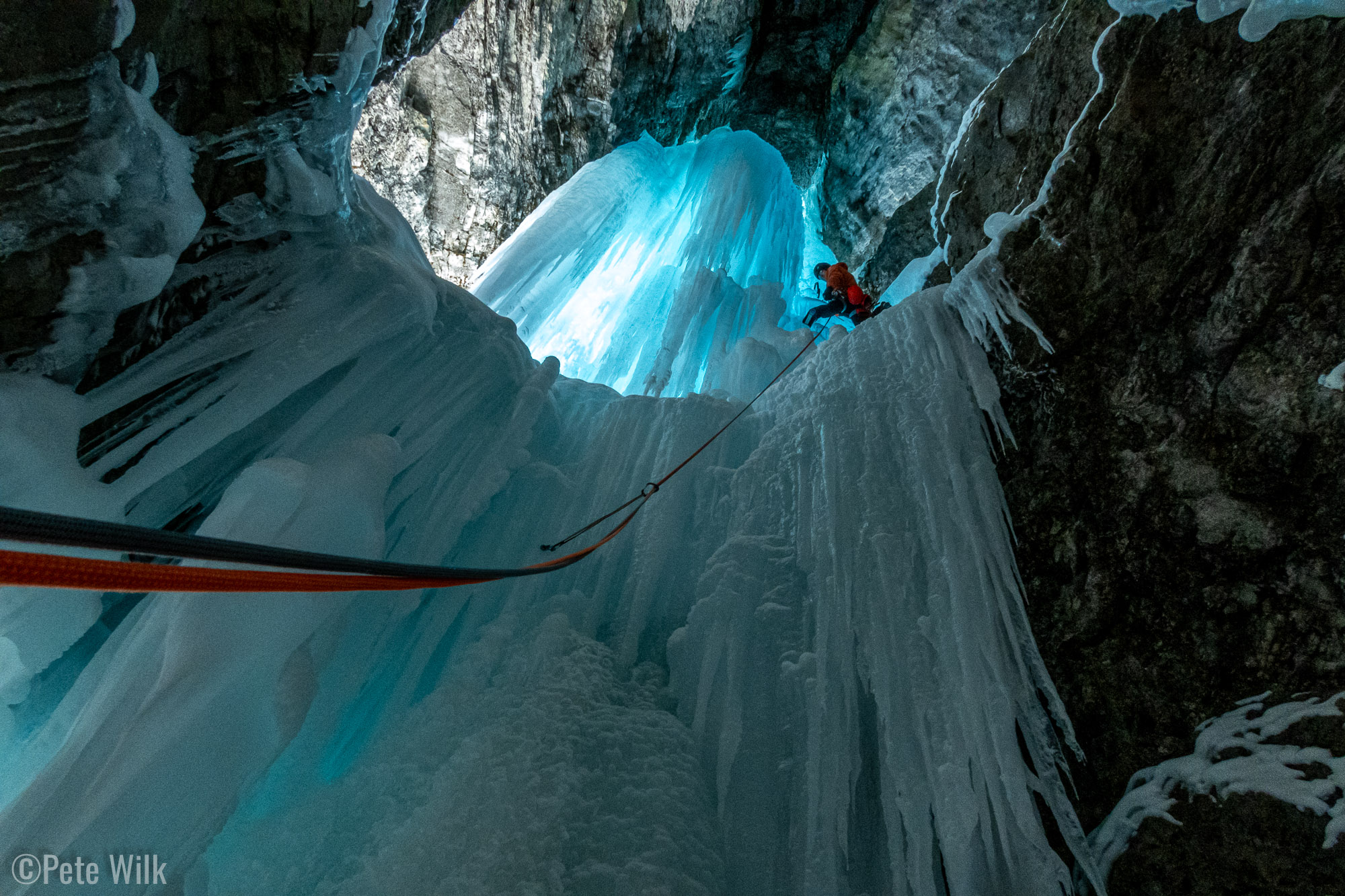
From our protected belay Nate continued up the back side of the icefall and poked through another opening on the opposite side of the cave to get back to the front of the ice. From here it was a steep delicate section of WI5 before reaching another semi-hanging belay stance. Once I arrived my tank was running low. Not so much strength-wise—my hands were a bit cold, though. Mainly my ability to manage the stress of being on steep, exposed ice in a remote location was depleted.
From our belay it appeared there was another 50ft or so of WI3 before getting to the top of the climb. Despite these appearances I felt the need to head down. After some snacks and water Nate obliged and he made a v-thread to start heading down. I didn’t like feel of bailing at that point, but with not a lot of progression over this season it felt more manageable to do so. Thanks is in order to Nate for being a great partner.
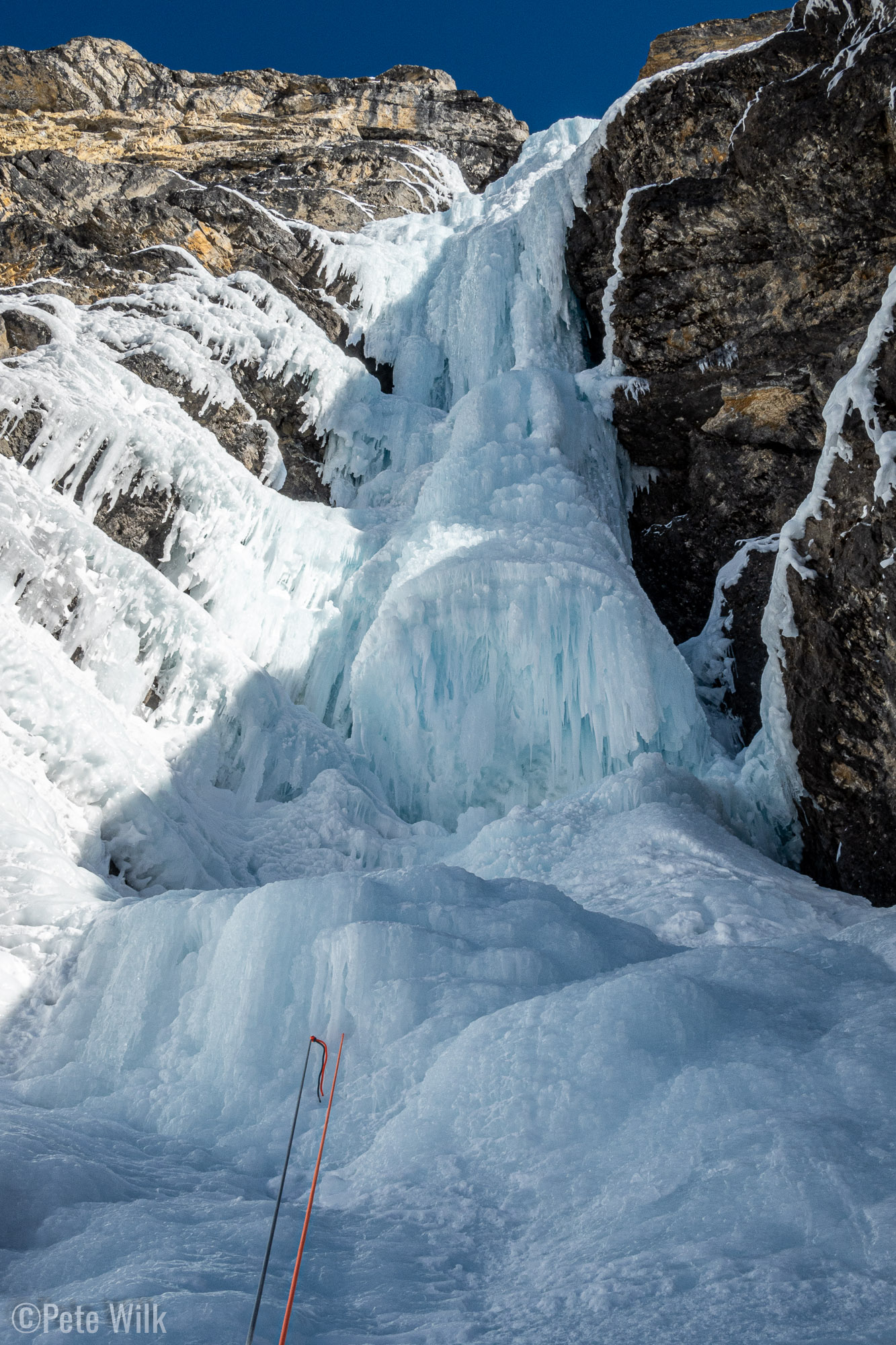
After a 55m or so rap back to the top of P1, Nate made another v-thread, there were no fixed anchors on any ice climbs that we saw, and we made it back to the base of the WI4 pitch. From there we decided to make another improvised thread to help get down to the top of the approach pitch and then on last rap to the big packs.
For the whole trip we’d all used radios to communicate, which is really nice. No need to yell and be misheard and it facilitates the ability to communicate between parties too. From Case’s and Lindsey’s messages we could tell they were pretty high on their route and we were able to catch a glimpse of Case nearing the top of one of their last pitches. Nate and I packed up and then did one more fun single pitch on the way back to the cabin, which as it turned out was the best quality ice we found all trip.
With a pick up time of noon Friday we had plenty of time to party Thursday night and polish off the bottle of Aberlour 12yr I’d brought in as well as pack in the morning. Nicole was awesome to put up with three more people bivying in her apartment on Friday night too, thanks!
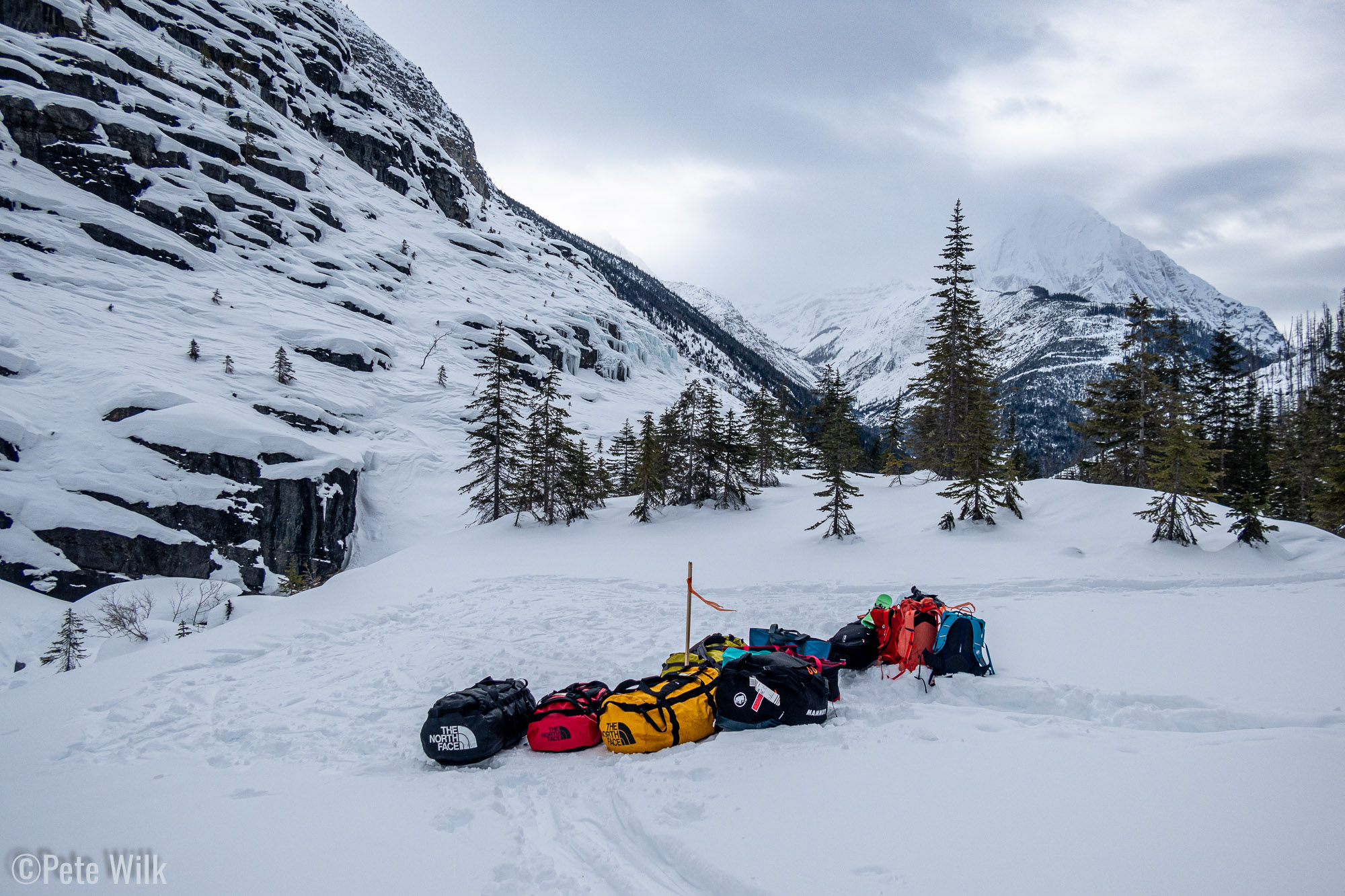
Saturday we headed towards Canmore and were able to get some casual cragging in at the same small crag called Grotto Falls that we went to last year. Just as it happened last year, KP showed up. After some great dinner in town we stayed at another friend of Case’s before getting dropped off at the airport Sunday morning.
Despite some hiccups the trip went great. Drop-off and pick-up a day early didn’t impact our climbing too much. With how blue collar the climbing was I assume we might have gotten one additional climbing day, but definitely not two, for me anyway. We learned a lot about the area for return trips. Probably the two most important: 70m pitches are common and so too the raps; snow travel via approach skis would be best, though good snowshoes/Verts might have a use too. I’m looking forward to a return trip in the future!

